Spaghetti Sauce With Italian Sausage and Ground Beef
Jump to Recipe
This spaghetti sauce recipe is a real Italian sauce, and once you realize how easy it is to make, I bet that you will never buy a jar of sauce again. (I also include directions on how to cook and serve spaghetti the RIGHT way!)
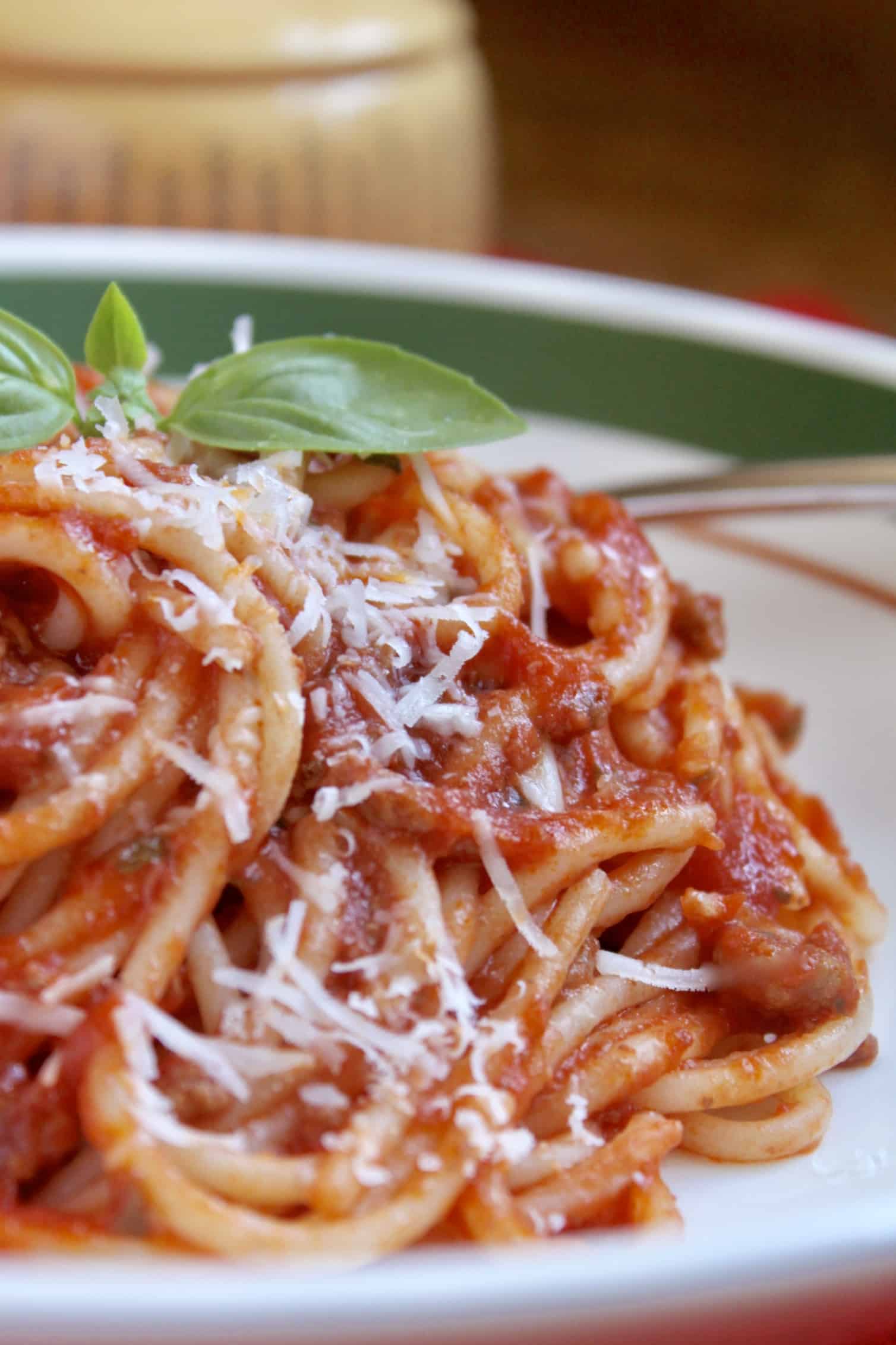
I want to change your life for the better. Honestly, I do!
As a Farm Foods affiliate and Amazon Associate I earn from qualifying purchases.
NOTE: I know this is a lengthy post, but think of it as a 10 minute crash course in "What Italians Know That You Don't Know." Want to cook like an Italian? Don't just skip to the recipe; trust me, all the info is valuable.
When I see "Italian" recipes that are simply NOT Italian recipes, it kills me because many of you probably don't know the difference between an authentic Italian dish, and one that is actually American or British. So chances are, you're actually using these recipes. You may also think they're good; but that's because you haven't tried the alternative.
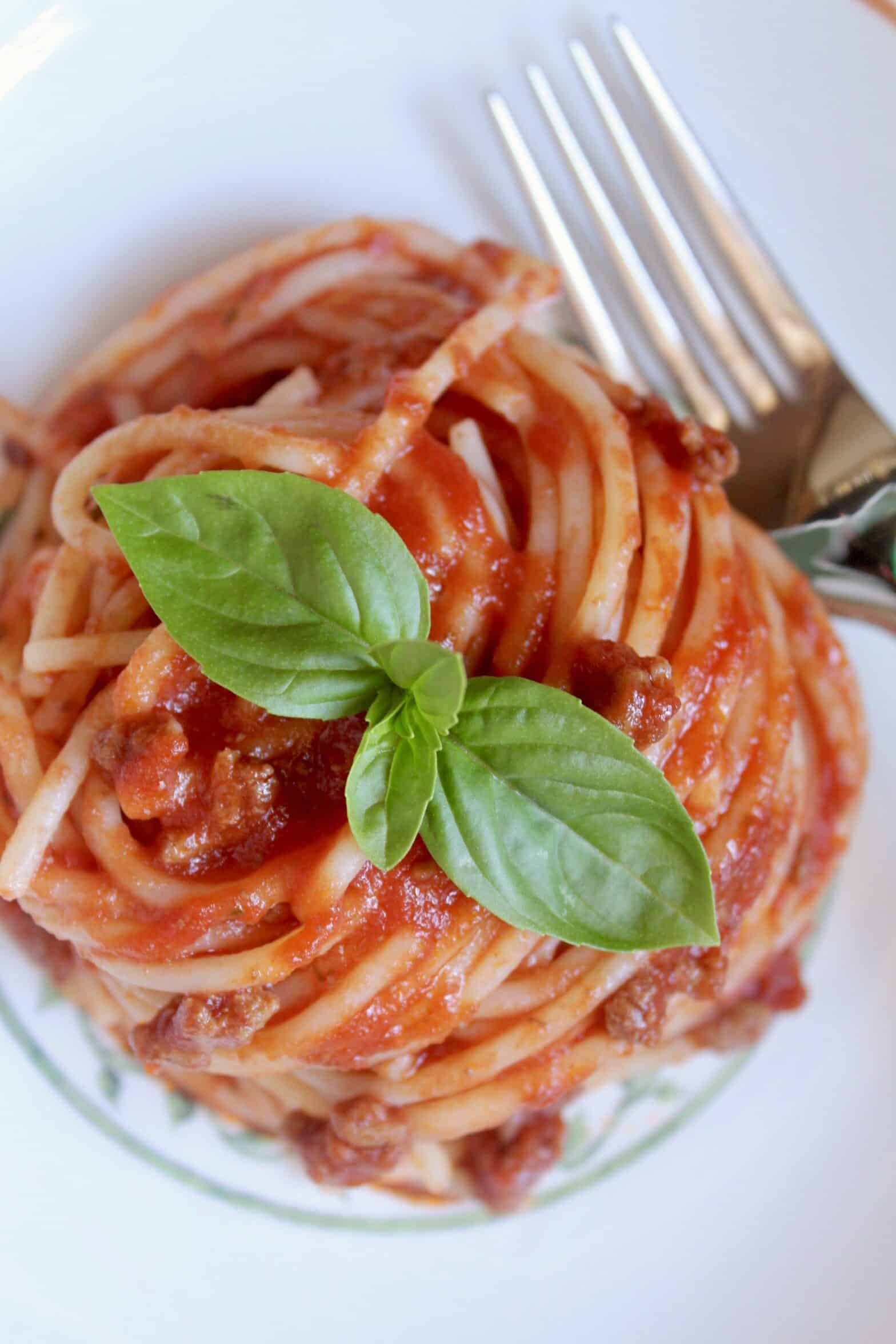
Hear me out before you call me a food snob. There's no reason to do more work, or use 9 unnecessary ingredients to end up with something that's just not even close to being as good, right? Don't you want an easier recipe?
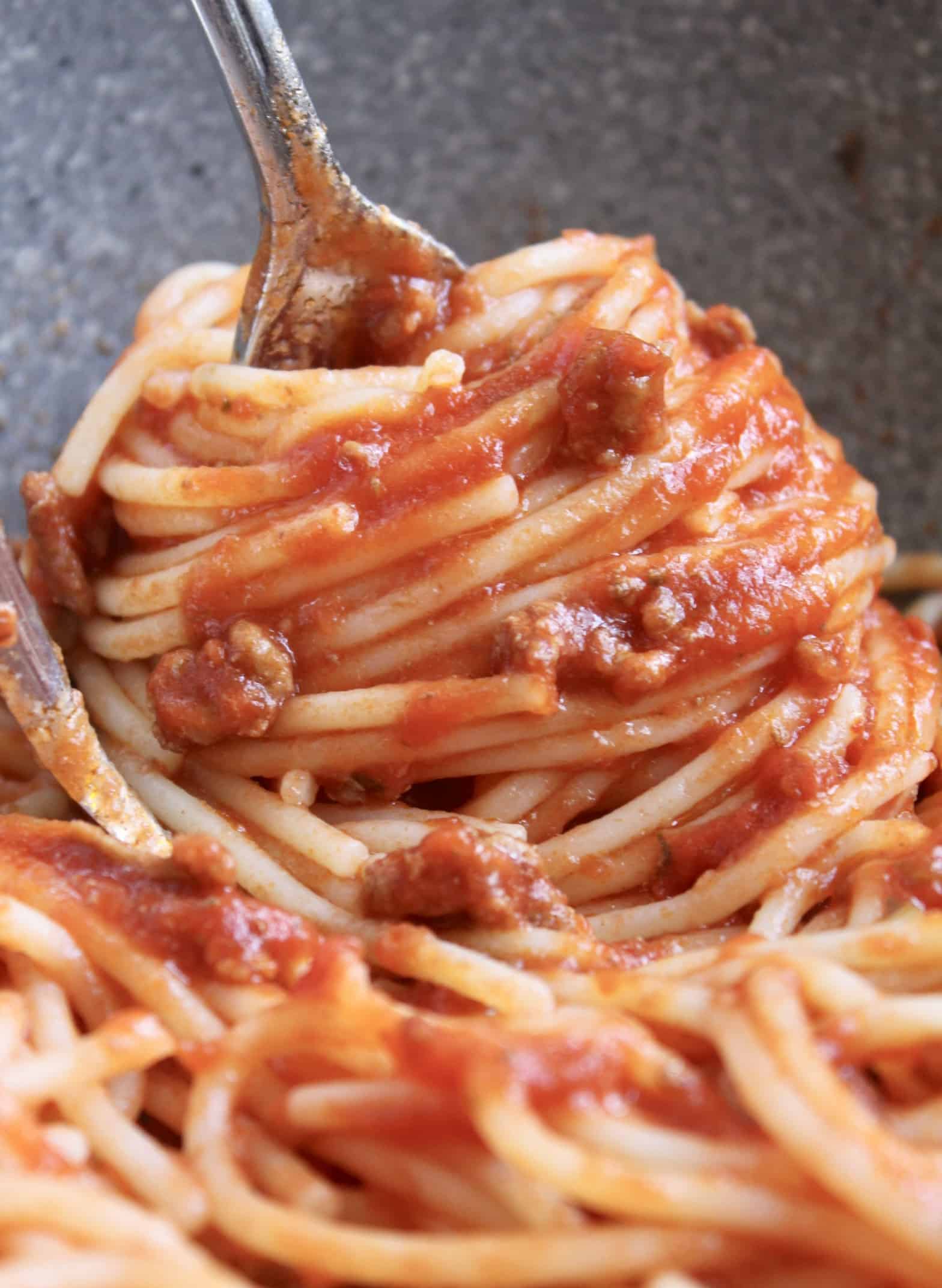
Why is this the easiest spaghetti sauce with meat? It's because there are only 6 ingredients, not counting salt and pepper, and it's ready in an hour! No cooking "all day long", that's just not a thing in Italy.
If you want a super quick sauce, use my recipe for a meatless
authentic Italian tomato sauce (ready in under 15 minutes).
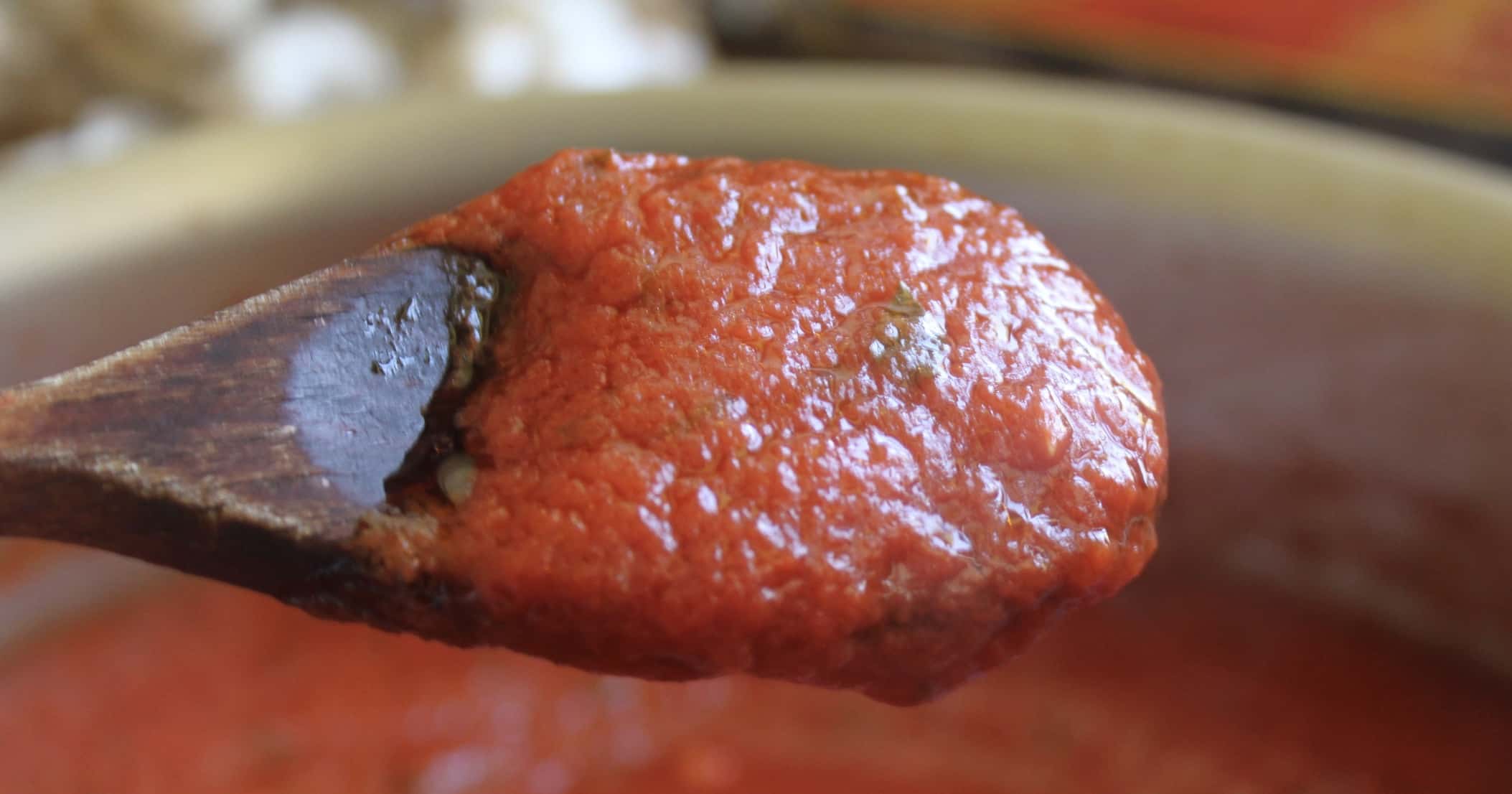
What is the Secret to Good Spaghetti Sauce?
There is no "secret" to good spaghetti sauce, you just have to ask the Italians: if you want good flavor, you need to start with the best quality ingredients! It's that simple. You can read about the best quality canned tomatoes in my fish in tomato sauce recipe.
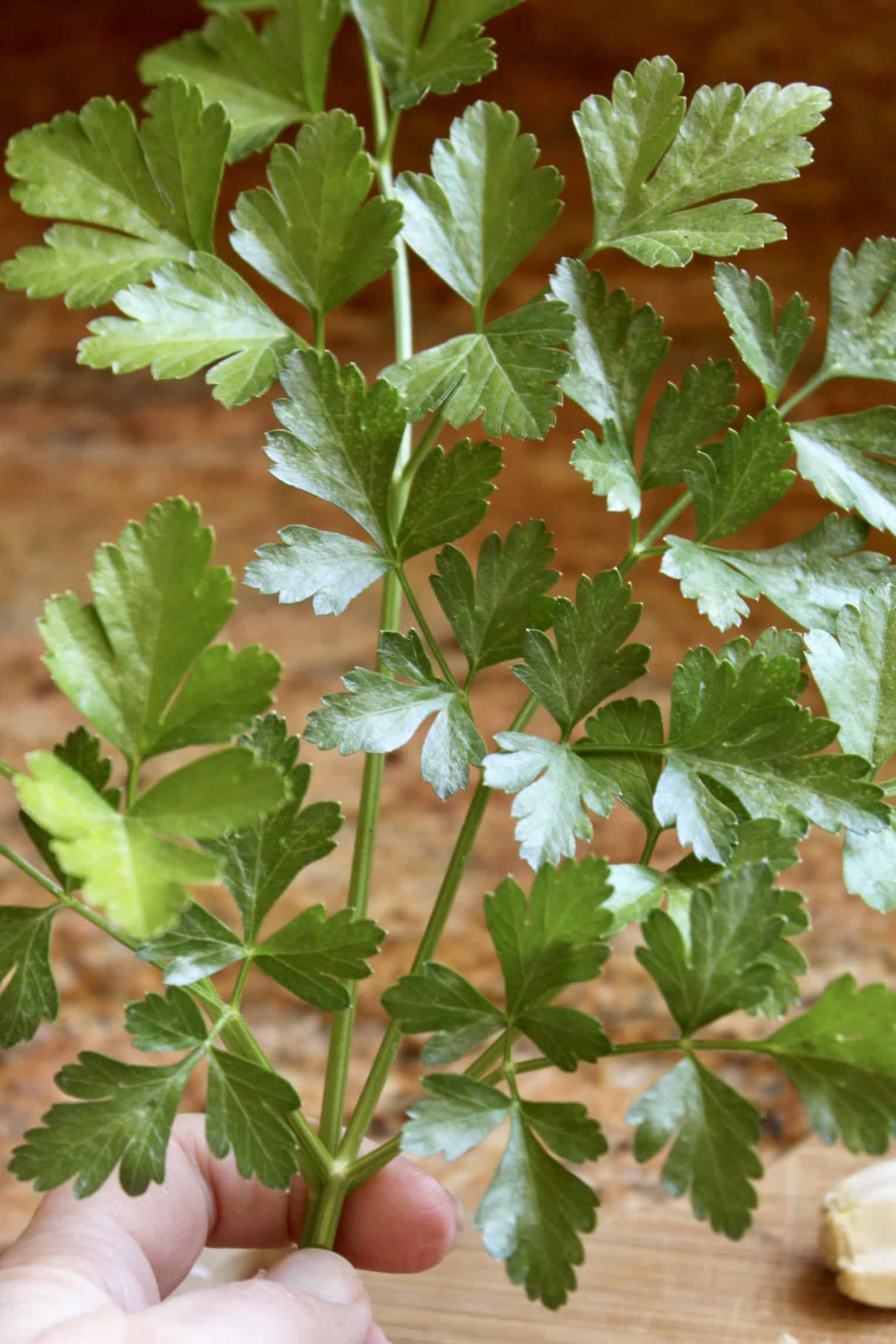
Grating your own Parmigiano Reggiano or Pecorino Romano to serve on top of your pasta is always the best plan.
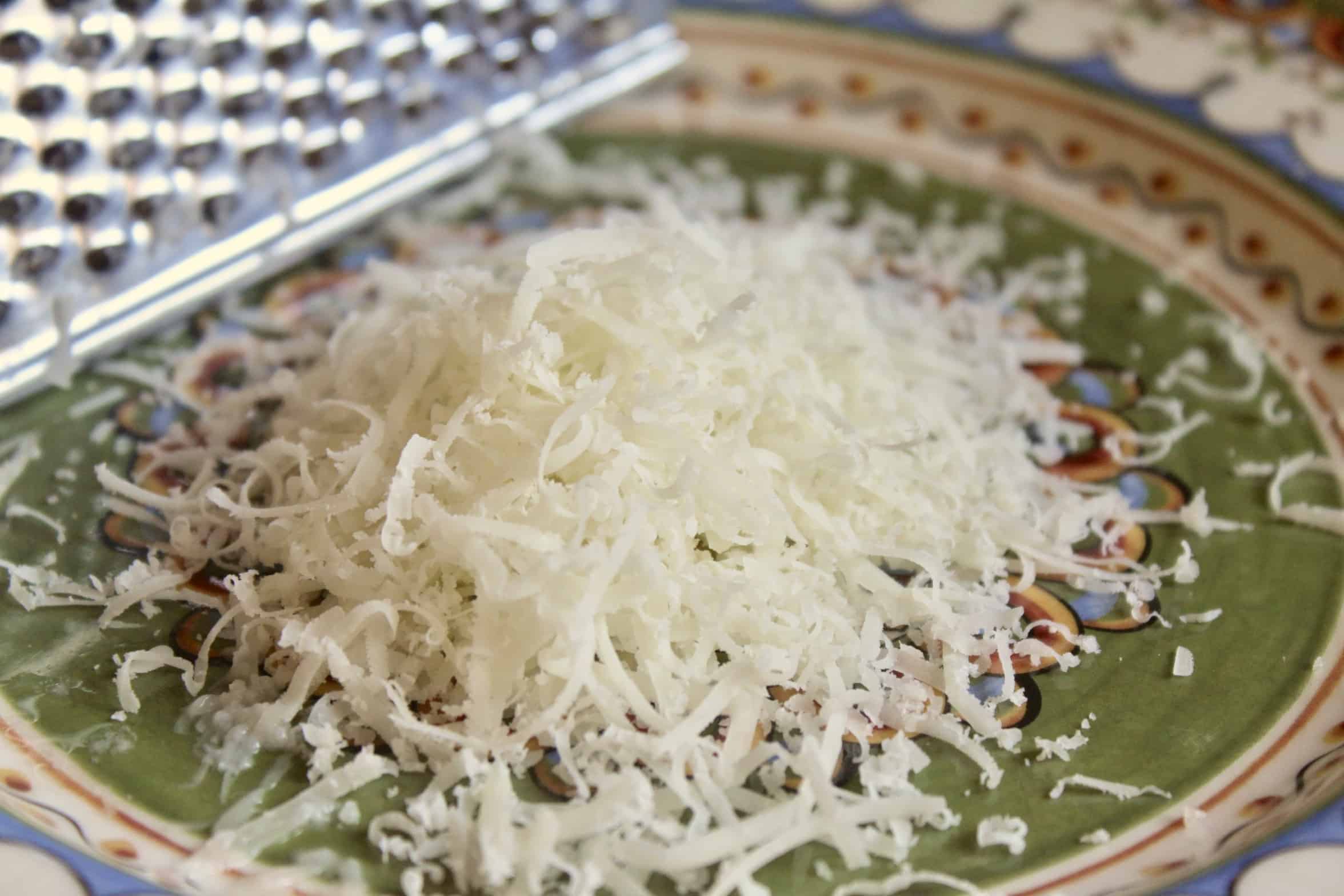
The meat is really important, too! Try to buy grass fed, without antibiotics and growth hormones. Corn-fed beef is not a good thing, despite companies promoting it as if it was. This is an interview I listened to on the radio many years ago. Since then, I have always tried to buy better beef, for our health and the health and treatment of the cows.
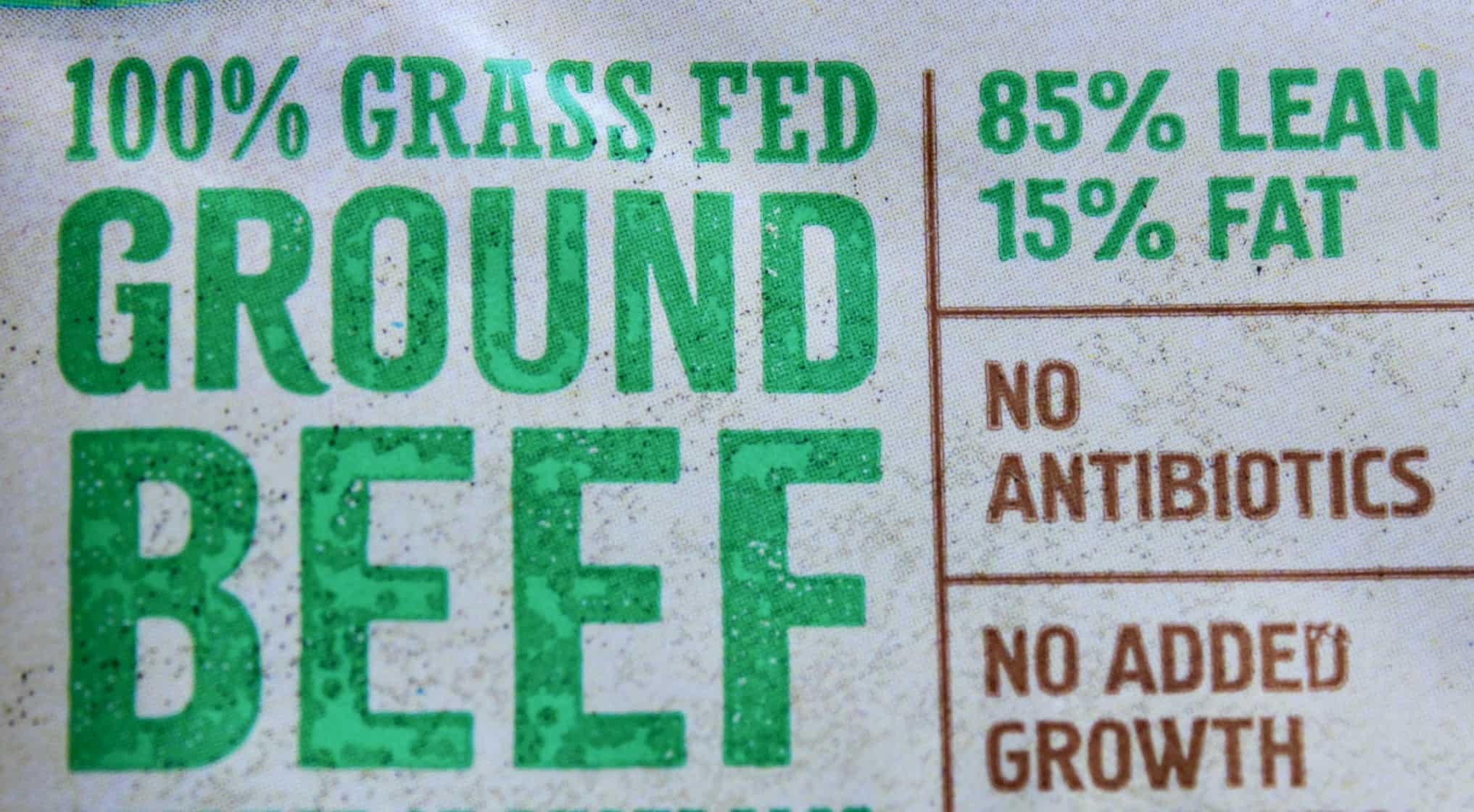
Recently, I tried Farm Foods grass fed, non GMO ground beef to make my sauce, and I'm so pleased! The meat doesn't end up in chewy chunks, but cooks beautifully in the sauce! The flavor is fabulous, too. You can have all types of grass feed beef, as well as lamb, pork, chicken and even seafood delivered right to your door (all products of small US farms)! Just click the banner below to go to their site.

What Seasoning do you put in Spaghetti Sauce?
Hardly any seasoning besides salt. When you use good quality jar/canned tomatoes, extra virgin olive oil, garlic and meat, you'll only need some Italian parsley and basil for this recipe.
That's all, please trust me on this. Yes, you can use dried parsley and basil, but it's just not going to be as flavorful. Please do not follow the advice that another American cooking site has shared, which is incorrect (see the screen shot below). This would be like a poison control website telling you to throw water on a grease fire! They have no authority to give you the advice, and it's just wrong.

NOTE: if you don't have fresh garlic, I would skip it rather than use dehydrated garlic, or garlic powder.
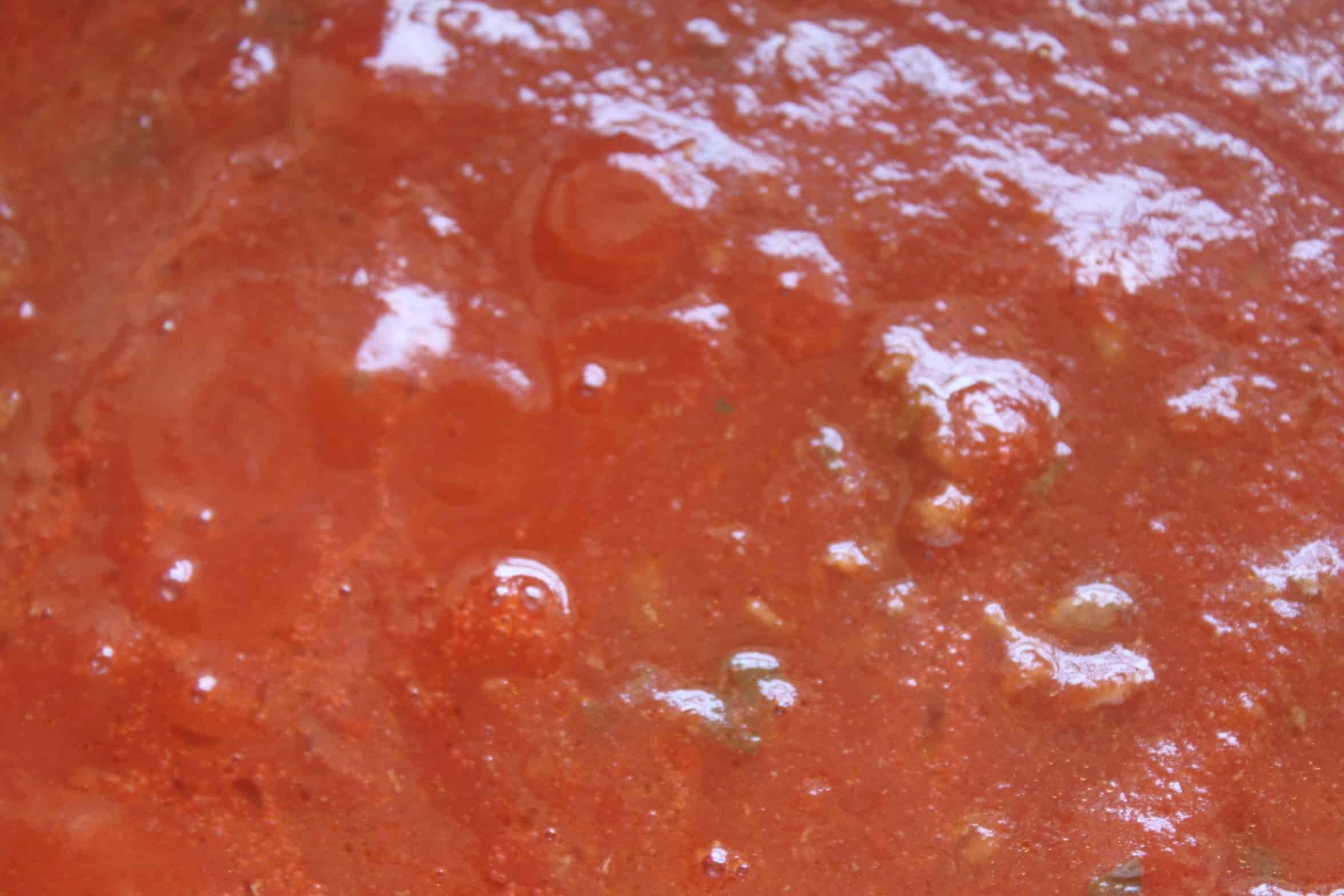
Who am I to tell you how to make a proper spaghetti sauce? Read my about page if you don't already know about my Italian upbringing (and DNA). Also, this is not a Bolognese sauce. That is a completely different recipe.
Do you Need Sugar in Spaghetti Sauce?
Sure, you'll need a ton of sugar in a spaghetti sauce which uses horribly acidic, poor quality tomatoes. Will this make it taste good? Absolutely not; not to mention that we really don't need added sugar to our savory dishes.
So save the sugar for baking, and use good quality tomatoes for that sauce! I usually use Mutti passata for my everyday sauce. However, the very best tomatoes are labeled Pomodoro San Marzano dell'Agro Sarnese-Nocerino DOP (look for these words in their entirety, don't just buy "San Marzano" tomatoes thinking they are the same). These tomatoes are the best of the best!
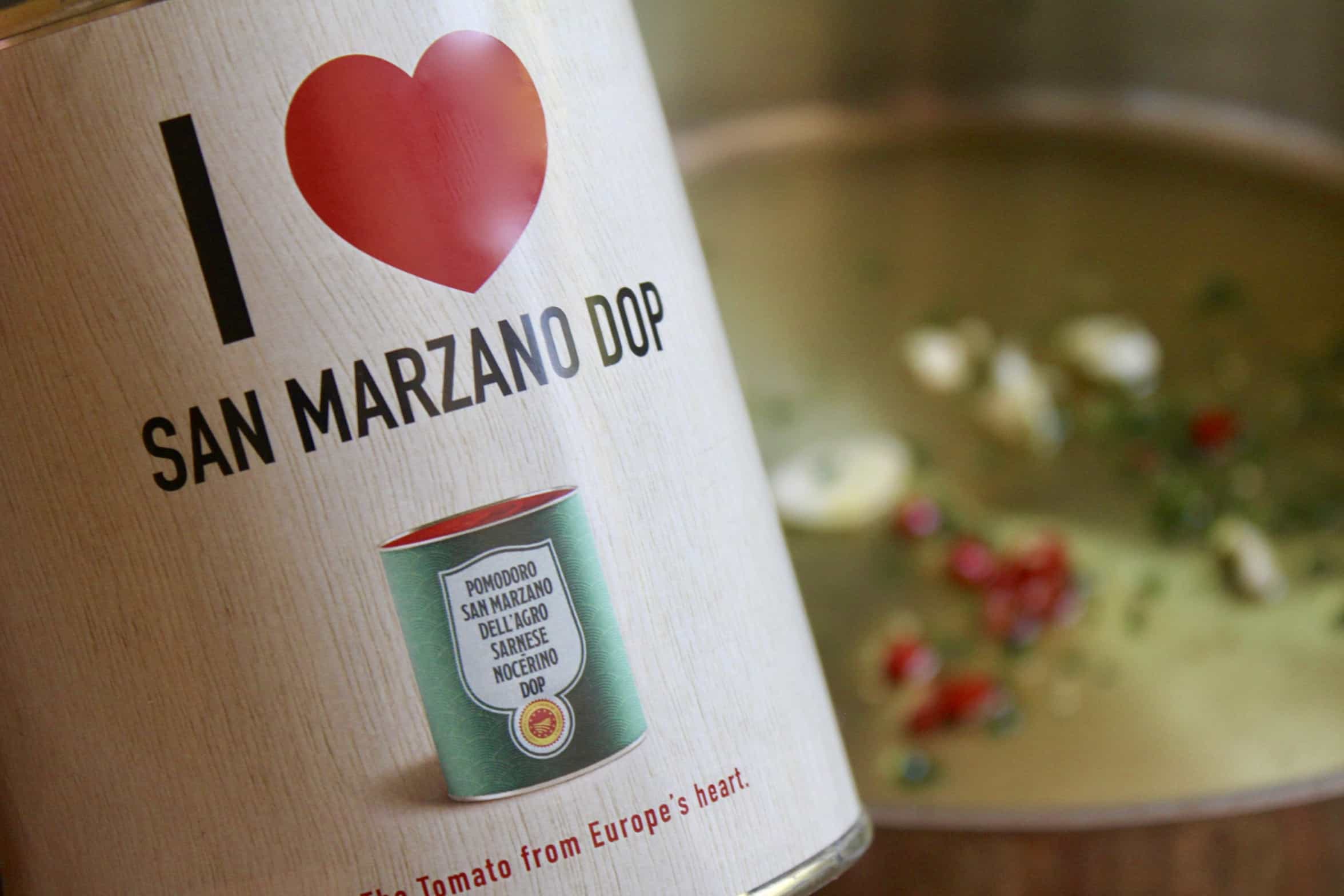
If you want to test your own canned tomatoes, it's easy: just dip your finger into them when you open the can and taste. Did you pucker? Make a sour face? They're acidic, and no good as they're going to ruin your sauce. Try it with the tomatoes I've recommended and you'll understand what I'm talking about. You can eat them raw without making a sour face! These are needed in order to make good pizza sauce, too. (For those of you interested, here's the Parmigiano cheese container.)
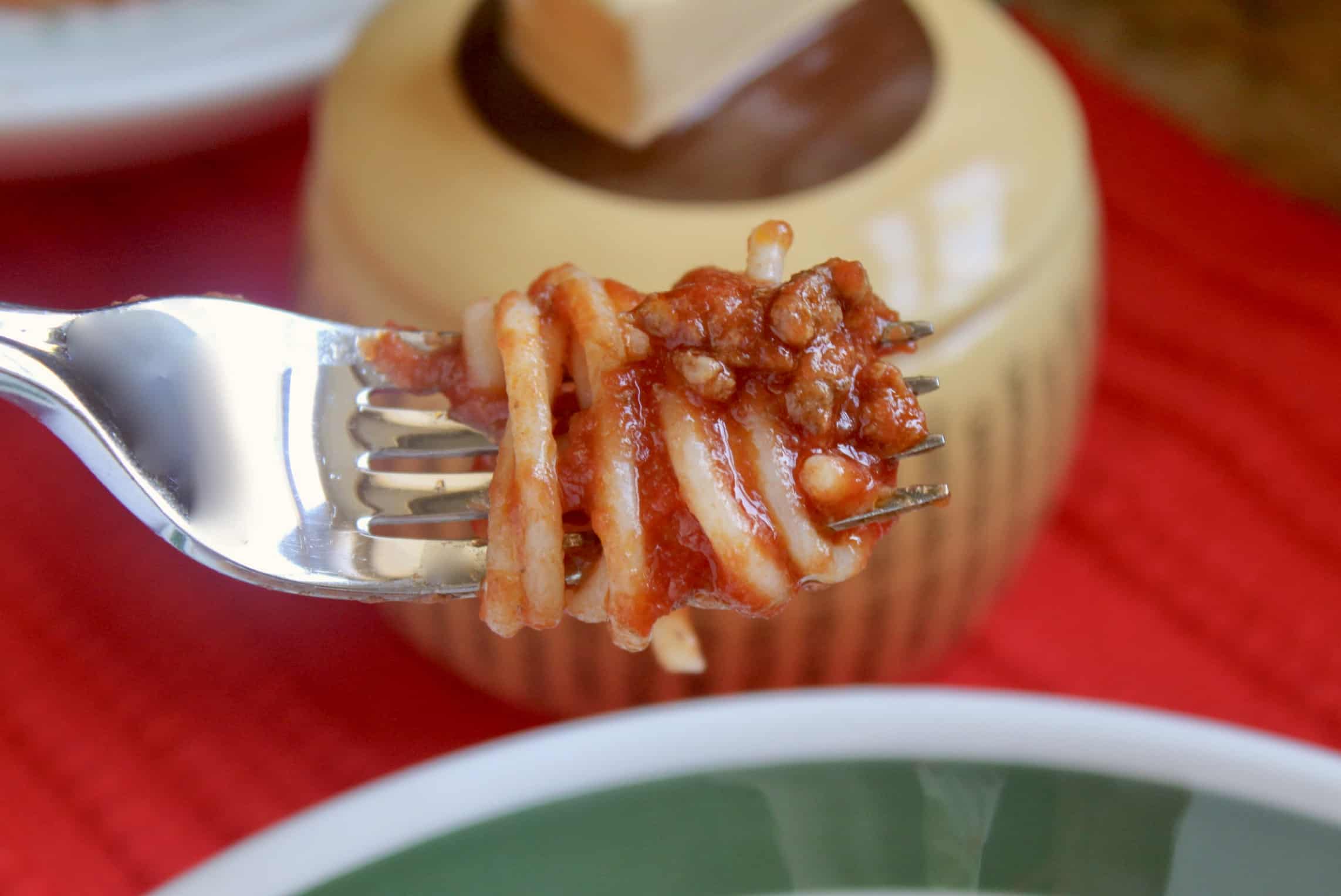
How do you add Flavor to Pasta Sauce?
My answer to this question is contrary to what you'll find on Google (as usual). Even though this recipe will give you a spaghetti sauce with fabulous flavor, you can add more flavor if you like, but don't reach for the spices! Instead, you can add any of the following:
- finely diced onion
- finely diced carrot
- a tablespoonful of good quality lard (without chemical additives)
- the rind of a piece of Parmigiano Reggiano
A famous celebrity cook has written a post on several ways to "Elevate Canned Spaghetti Sauce", but I can save from you reading all her useless tips. There's just one way to deal with jars of Prego, Ragu, and Classico: don't buy them in the first place! They are simply pulling your leg with those Italian names because there's nothing Italian about them.
Want to learn more about authentic Italian cuisine? You need this short book by my Italian-born friend, Alessandra Gambini, called No Ketchup on Spaghetti, How to Shop, Eat and Cook like an Italian.
How do you Make Spaghetti Sauce from Scratch?
It's so easy, you'll never look back. Follow the step by step directions below and you'll be a pro in no time. After a couple of times, you won't even need to refer to my recipe, it's that easy! Do you need to simmer it all day? NO! This is another myth that needs to be dispelled. If you simmer sauce all day, you'll end up with tomato paste.
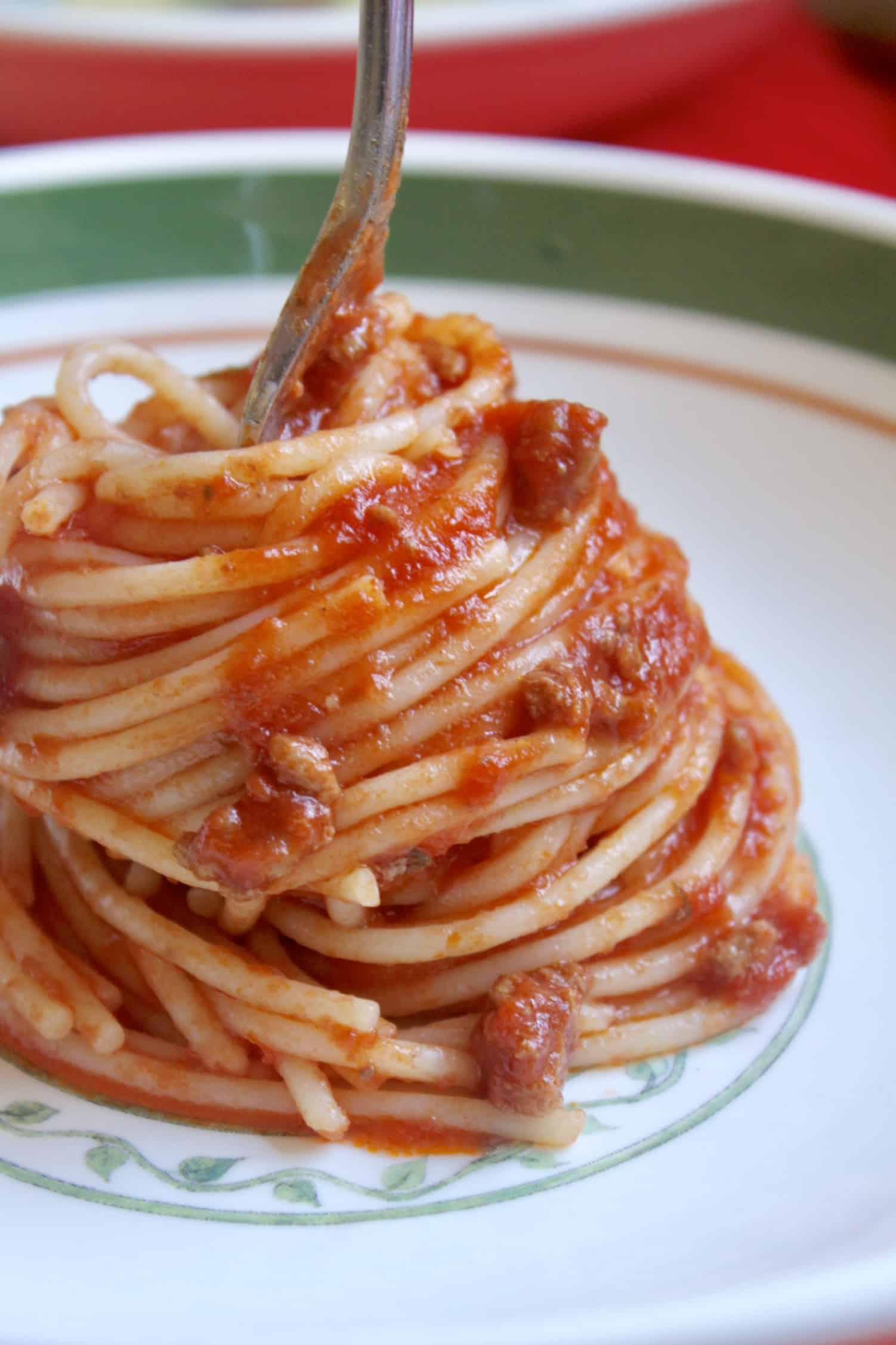
How to Properly Serve Spaghetti Sauce on Spaghetti
You know the pasta emoji? It's all wrong. NEVER, serve spaghetti or any pasta like this 🍝 If you want your pasta to taste the best, then follow my directions below. Don't be tempted to use a colander (without reserving pasta water), or dish the spaghetti onto the plate and then add the sauce. It tastes entirely different this way, and it's not better, I can assure you. If you don't believe me, try it both ways.
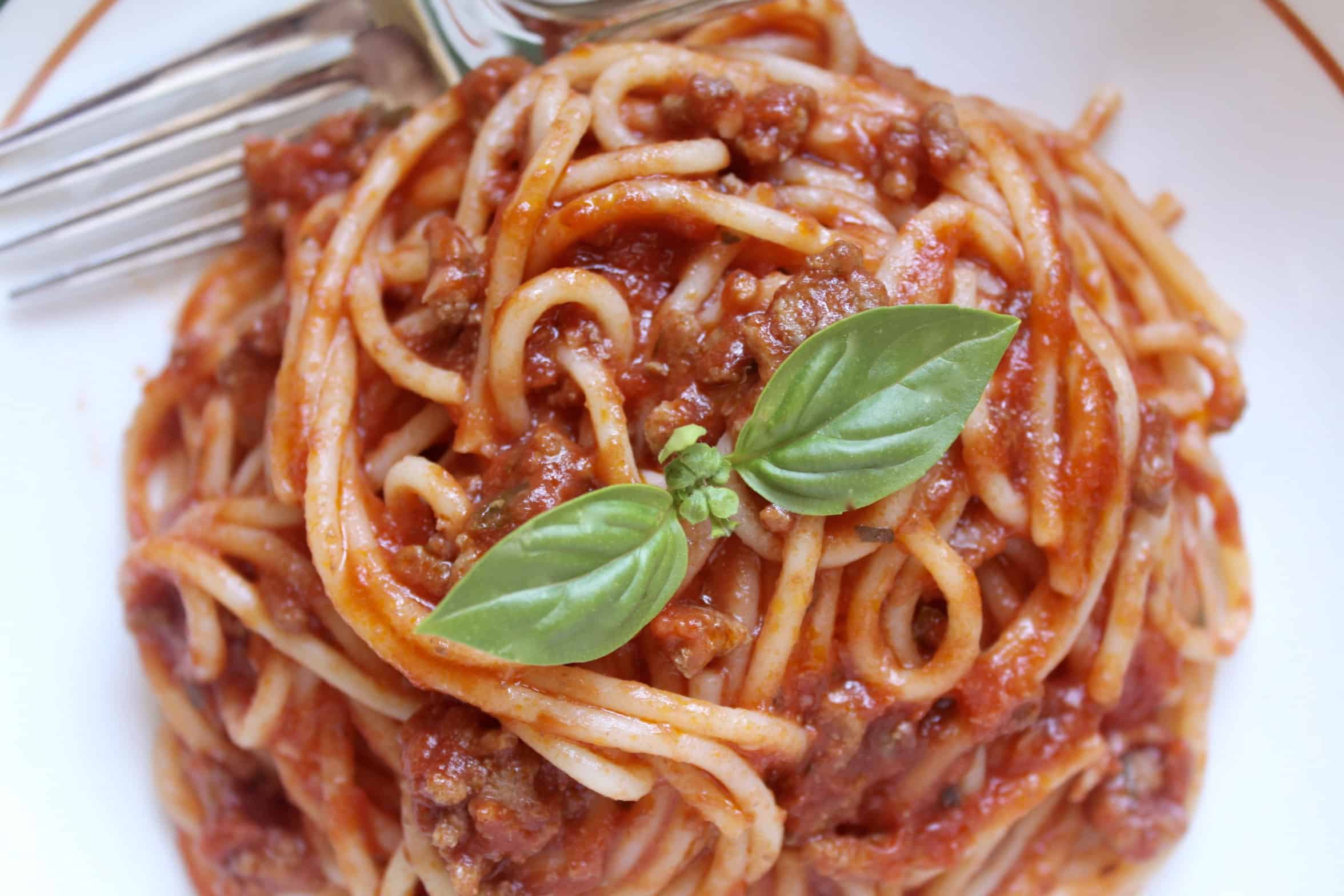
Can I Freeze Spaghetti Sauce with Meat?
Absolutely, spaghetti sauce with, or without meat, freezes beautifully. In fact, I recommend that you make extra sauce specifically to freeze some as it's such an easy meal when the sauce is already made.
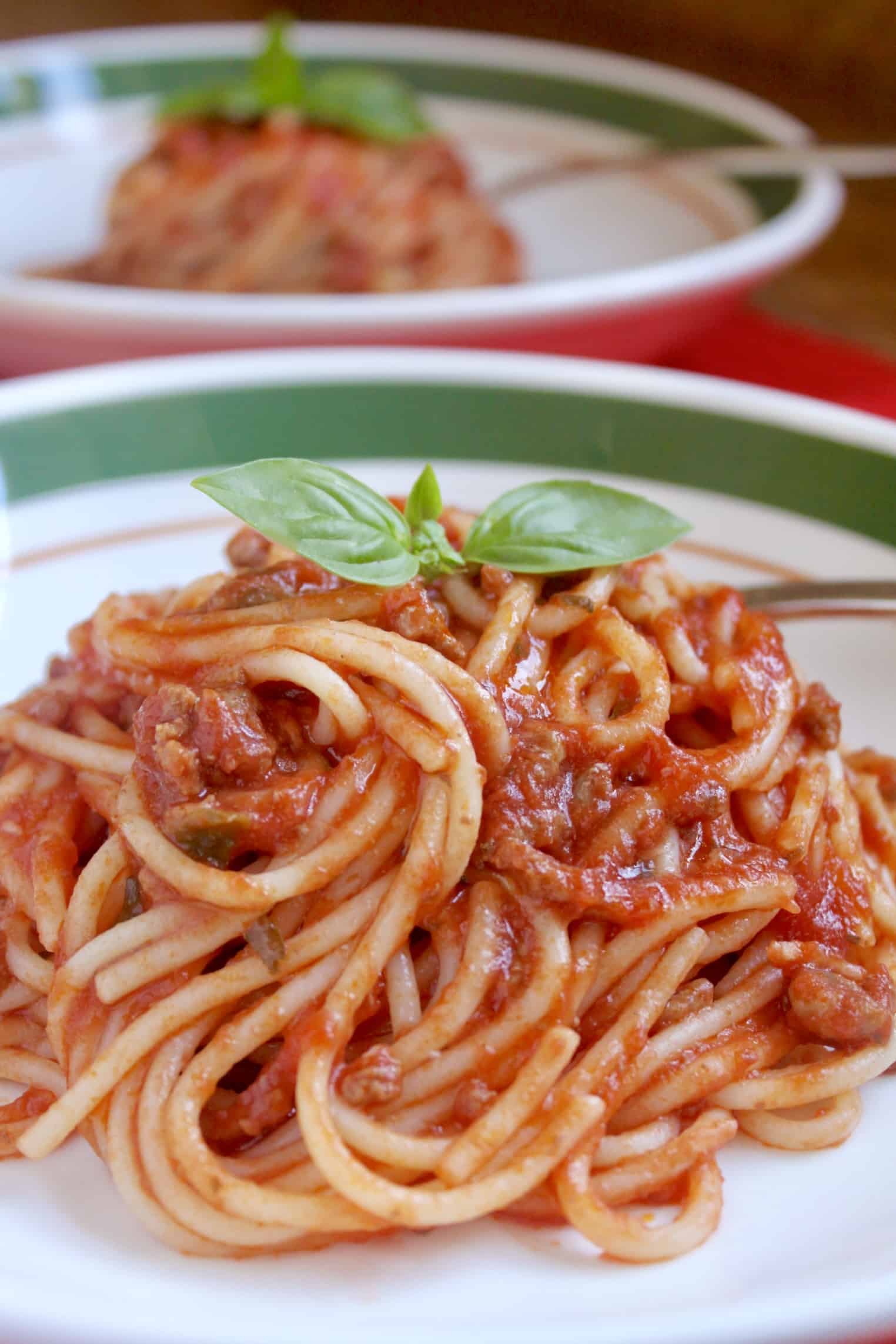
Italian Spaghetti Sauce Recipe
recipe by Christina Conte (family recipe) makes enough for more than 1 lb of pasta
FULL PRINTABLE RECIPE BELOW
Make the Spaghetti Sauce
Crush the garlic with the flat side of a knife.
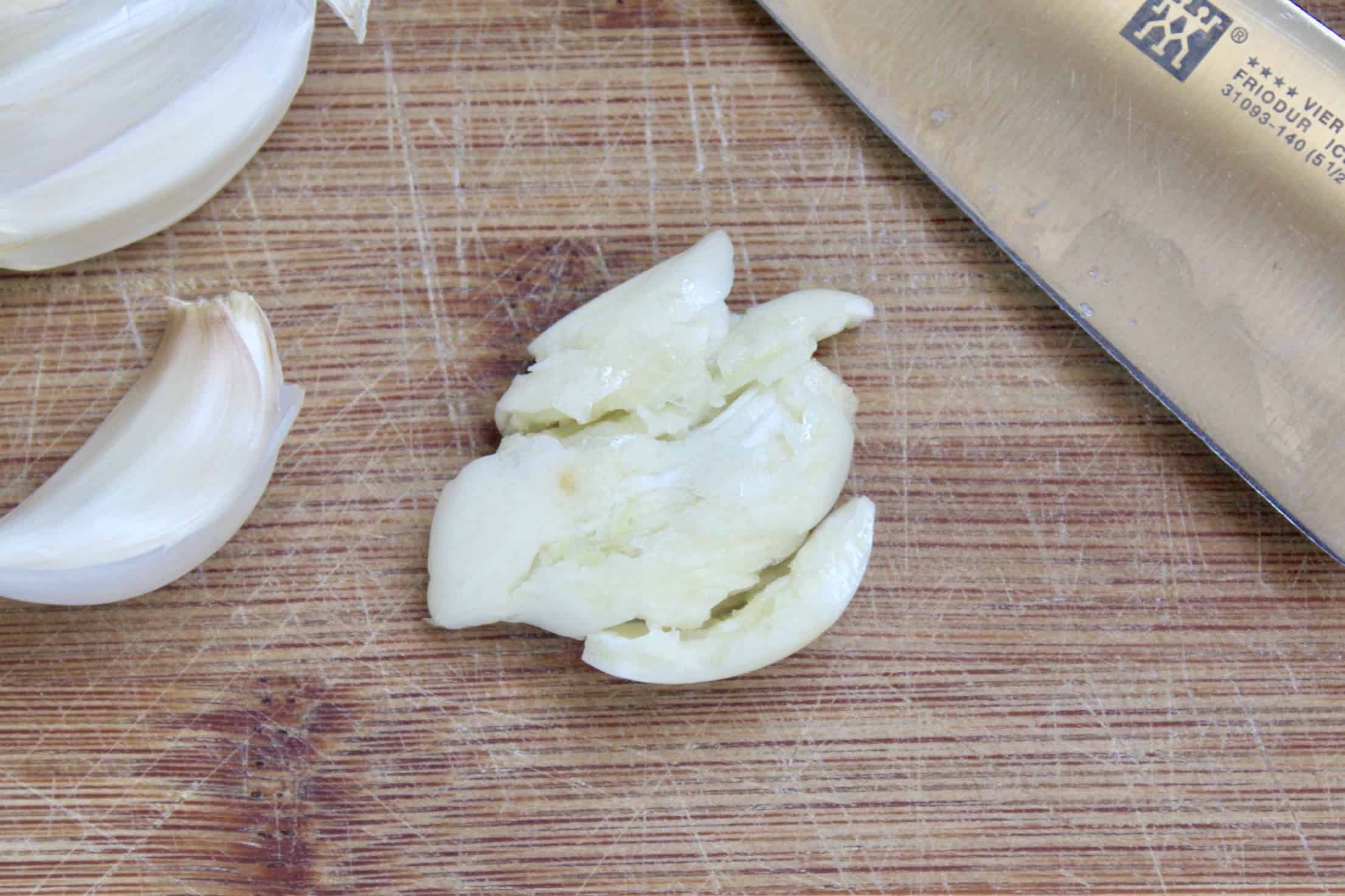
Bring the extra virgin olive oil (and lard, if using) to medium high heat, then add the garlic and chopped parsley.
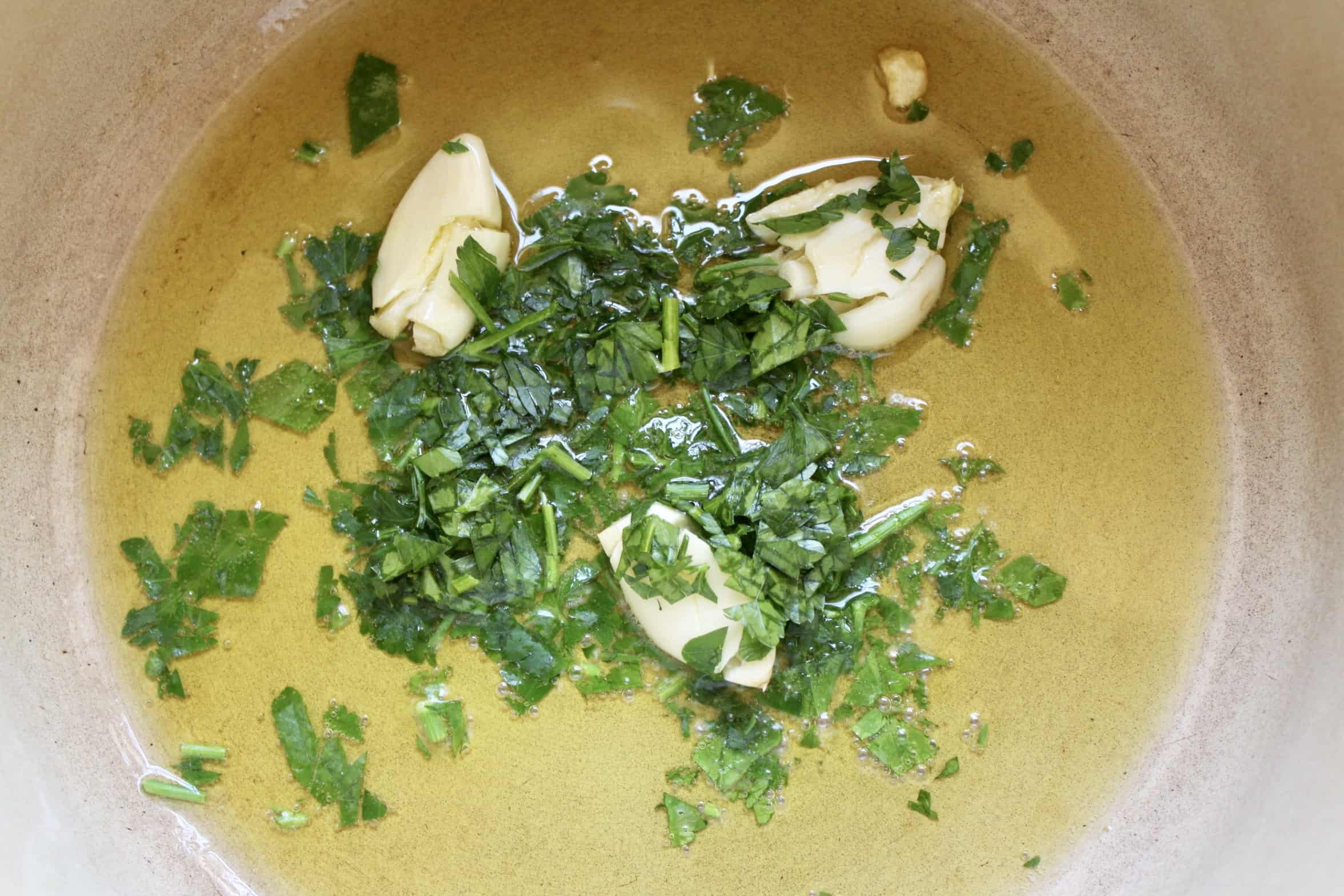
After a minute, add the ground beef and break up with a wooden spoon. Add some salt, and cook until it begins to dry up, then add the tomato passata/purèe/chopped tomatoes of your choice.
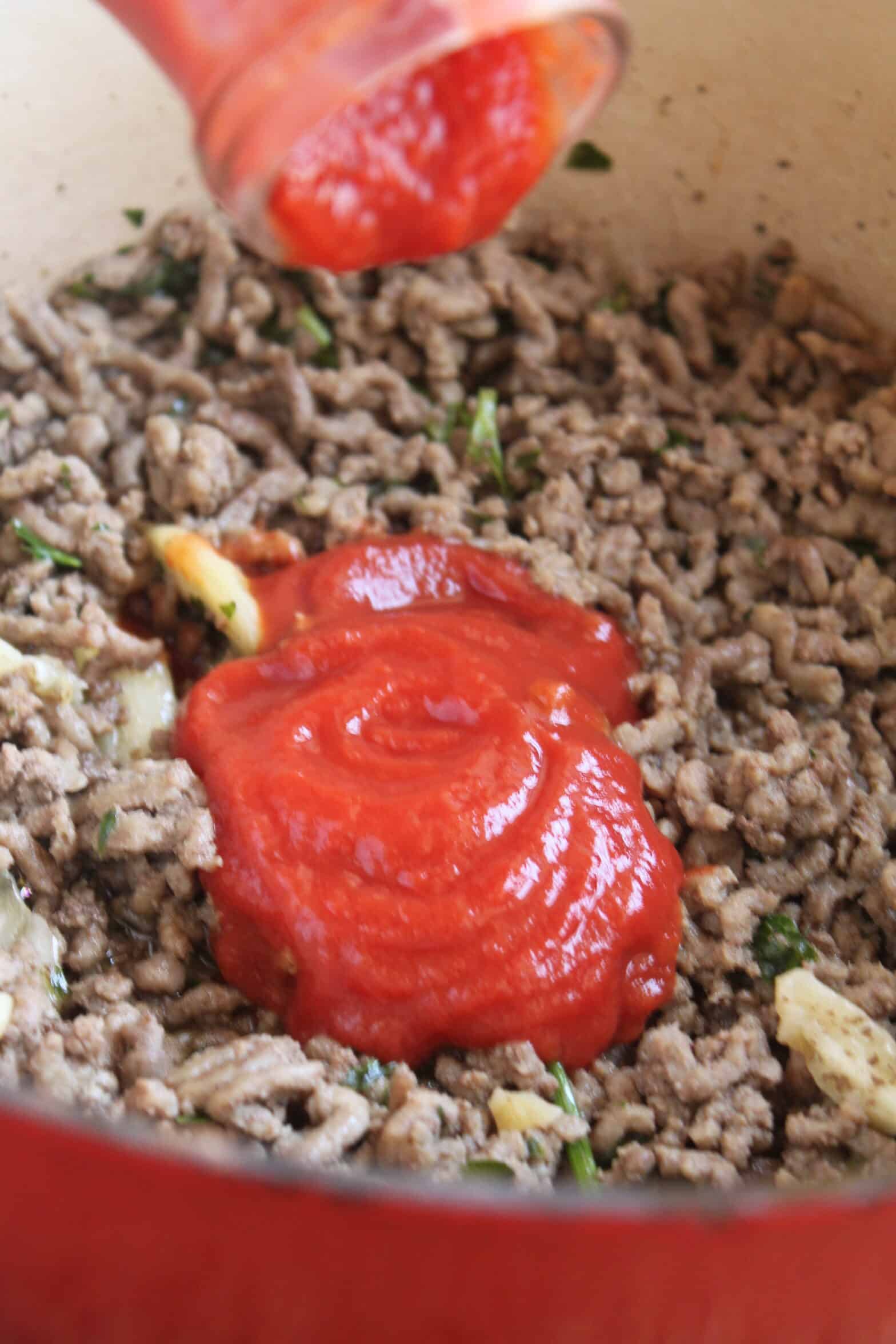
If using Mutti, they tend to be thick, so add about ¾ cup of water or until the bottom line of the jar (shake to rinse) then add to the pot. If you're using another brand, rinse the can/jar with a little less water, unless it's very thick.
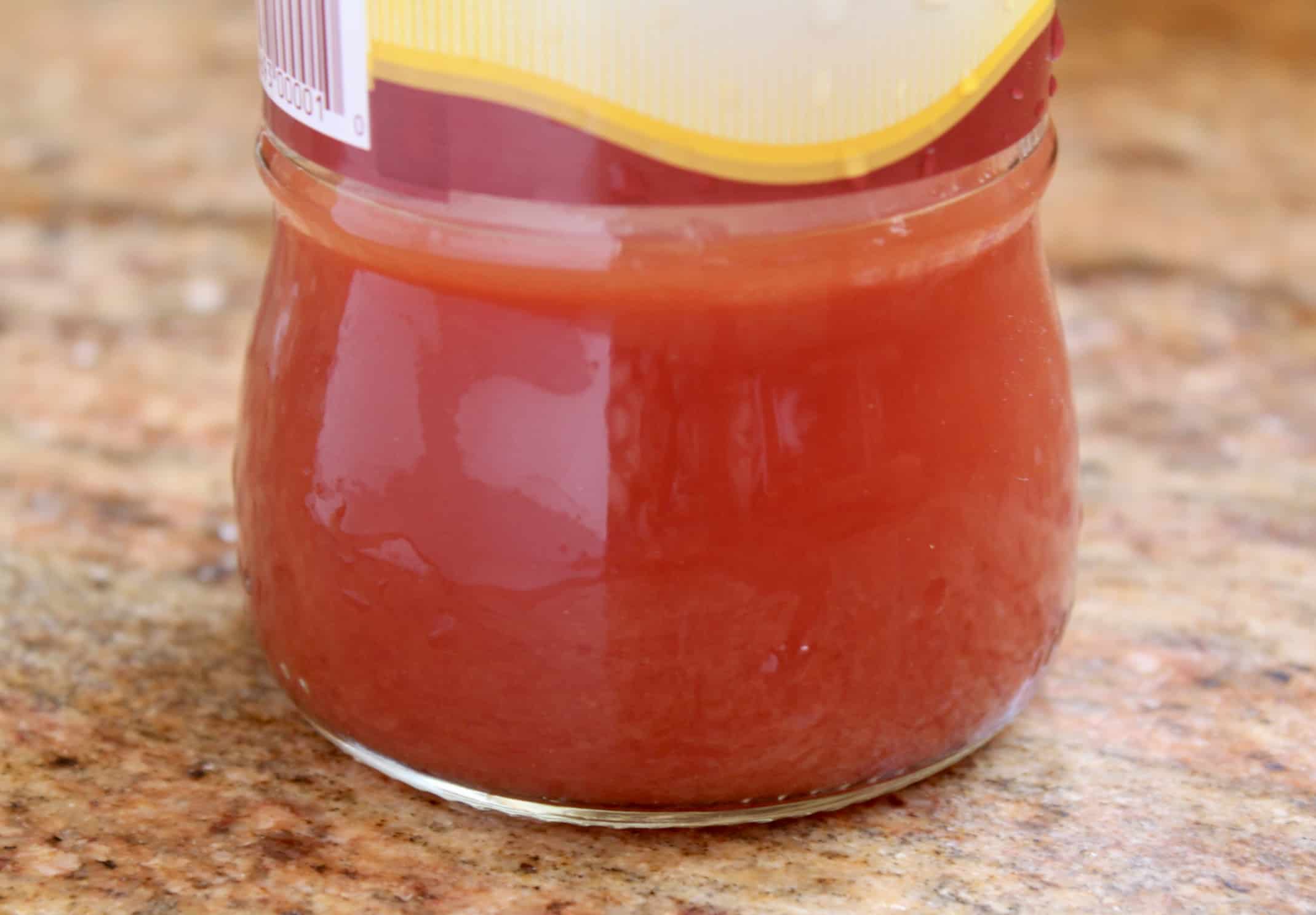
Put the burner on high to bring the sauce to a simmer, and add more salt. Don't be afraid to add Kosher/sea salt as I can guarantee you will have much less sodium in this sauce than a jar of store-bought. This may look like a lot of salt, but it's only one teaspoonful. (Note: Diamond Crystal Kosher Salt is my choice of salt for everyday dishes: it is much less salty than table salt. You should be able to find it for a few dollars a box.)
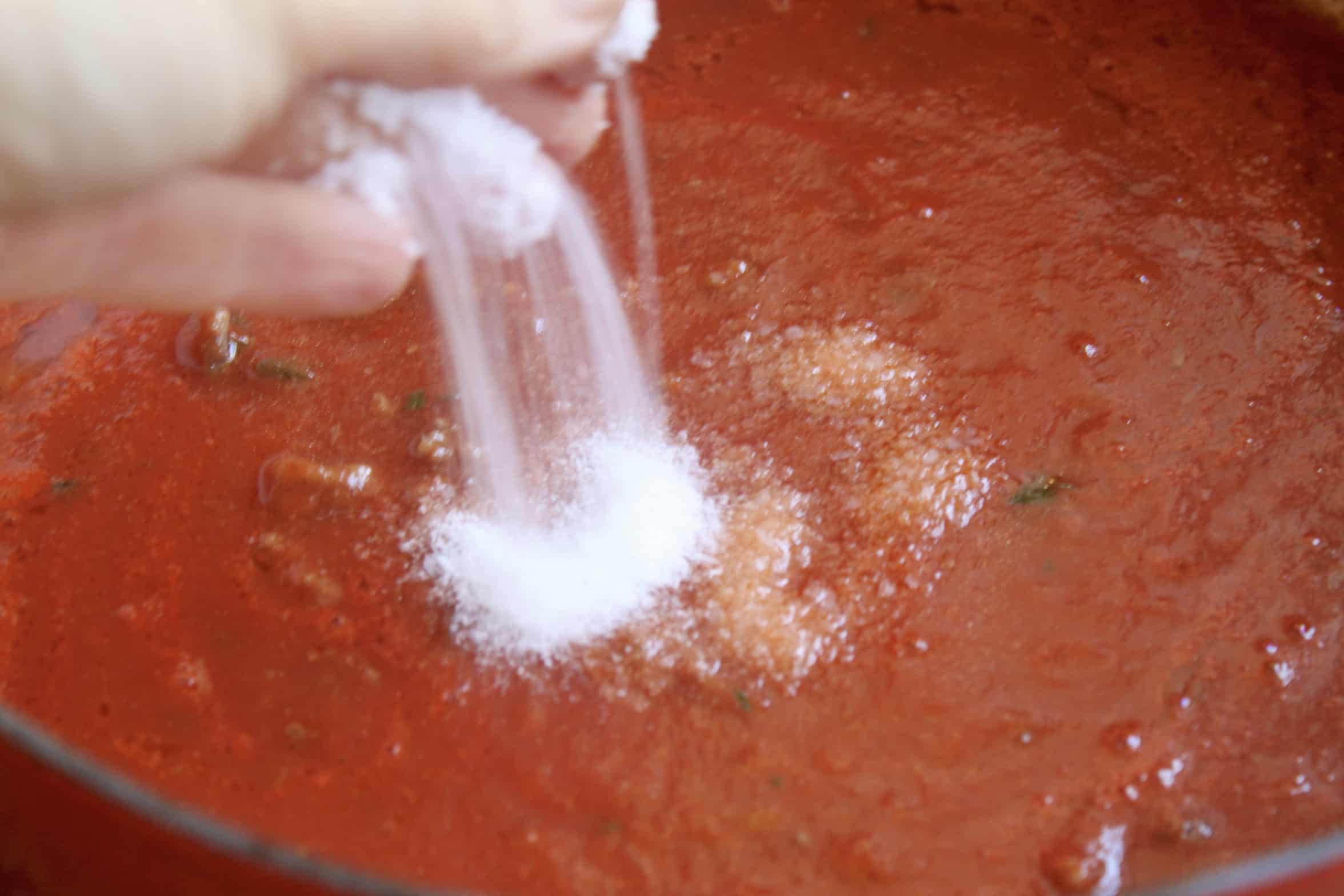
Lower the heat so that the sauce simmers gently for about an hour, stirring occassionally (so that the sauce won't stick). Taste for seasoning after about 30 minutes, and add salt if needed.
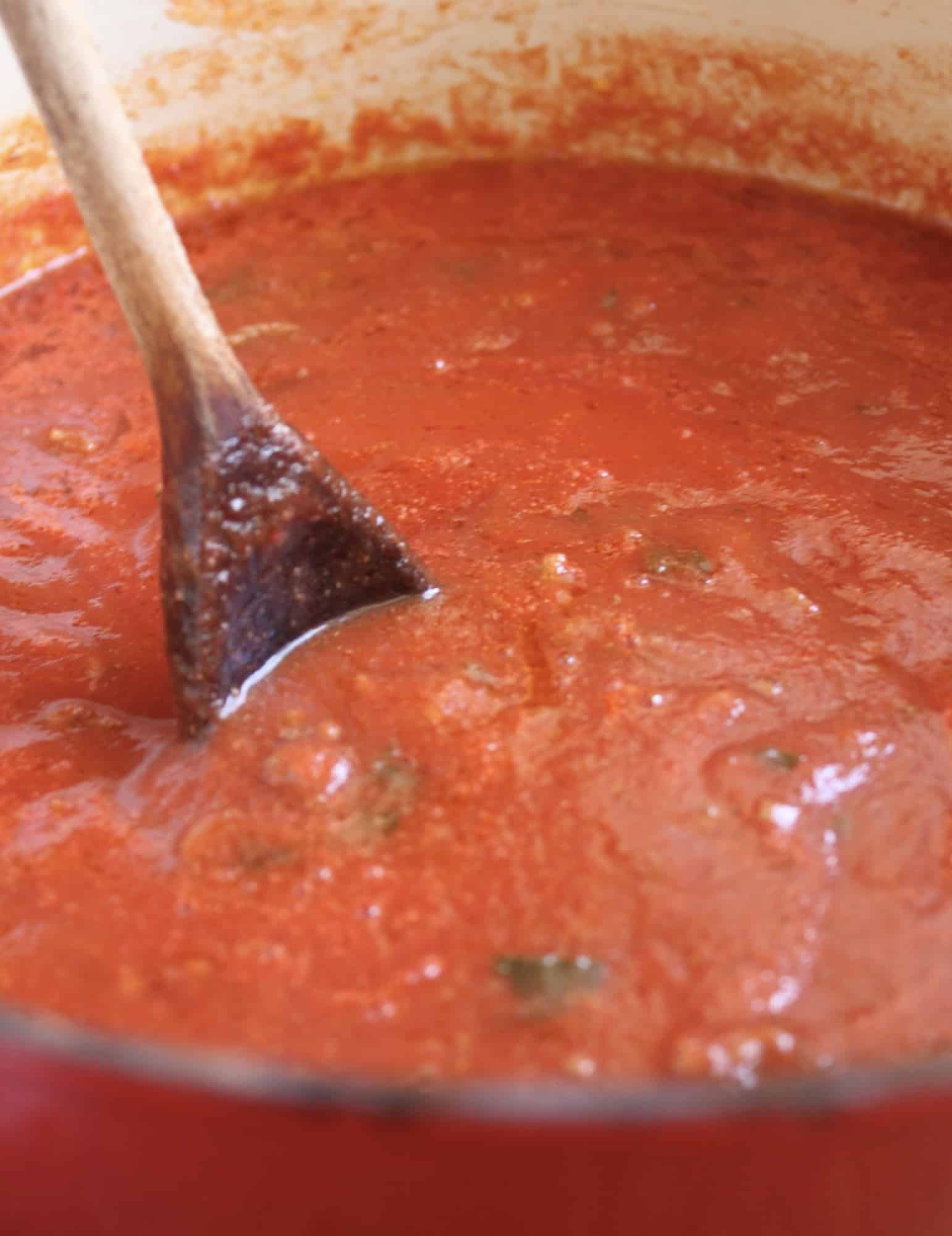
When the sauce is ready, check once again for seasoning. Add salt and pepper as desired, and a generous amount of fresh basil, torn into pieces. That's it. I told you it was easy!
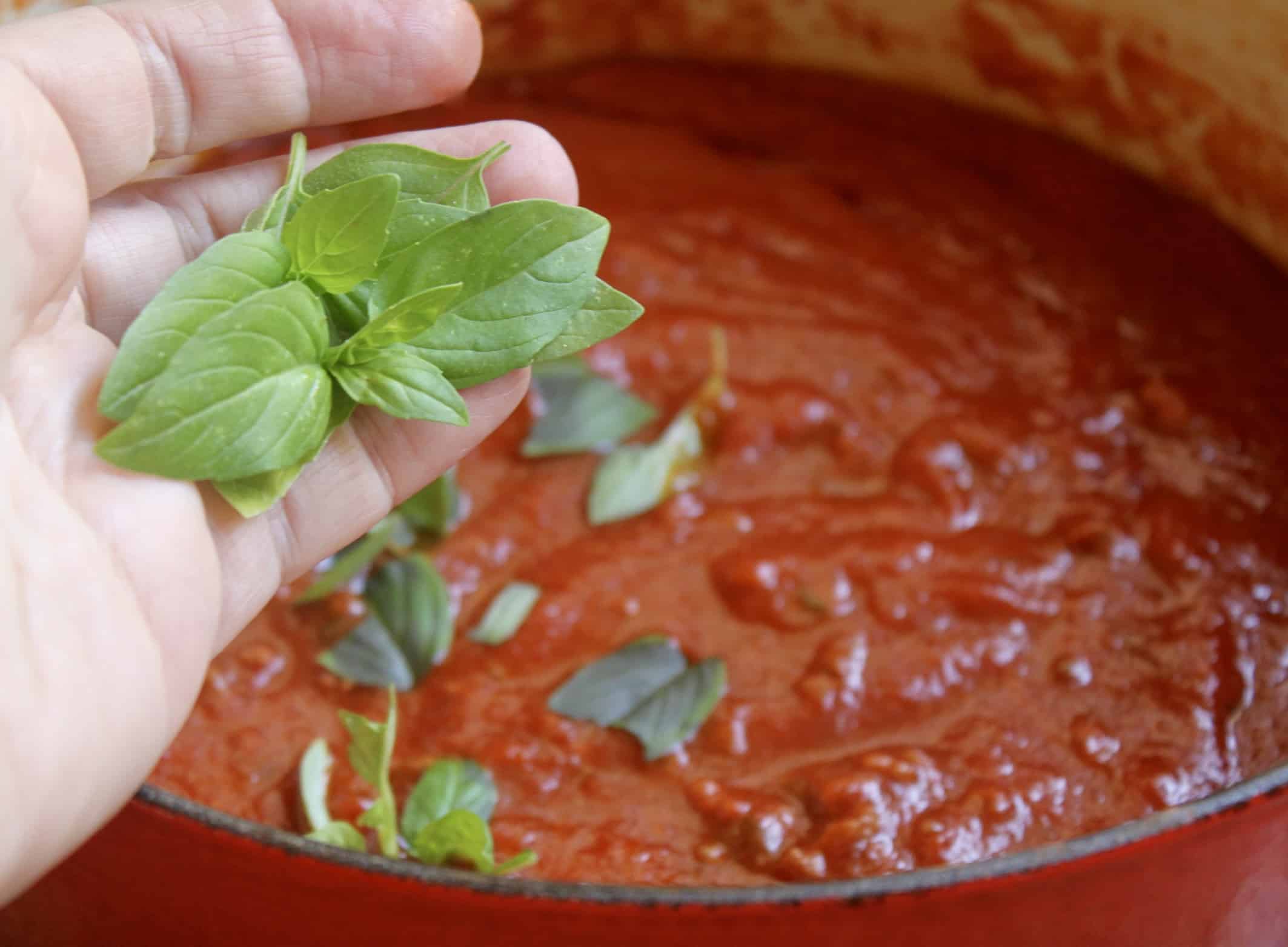
Cook the Pasta
Bring a large pot of water to a boil, with plenty of salt (the water should taste like sea water). Add the spaghetti when the water is at a rolling boil, immediately stir to make sure the pasta is covered with water and doesn't stick (do not add oil to the water).
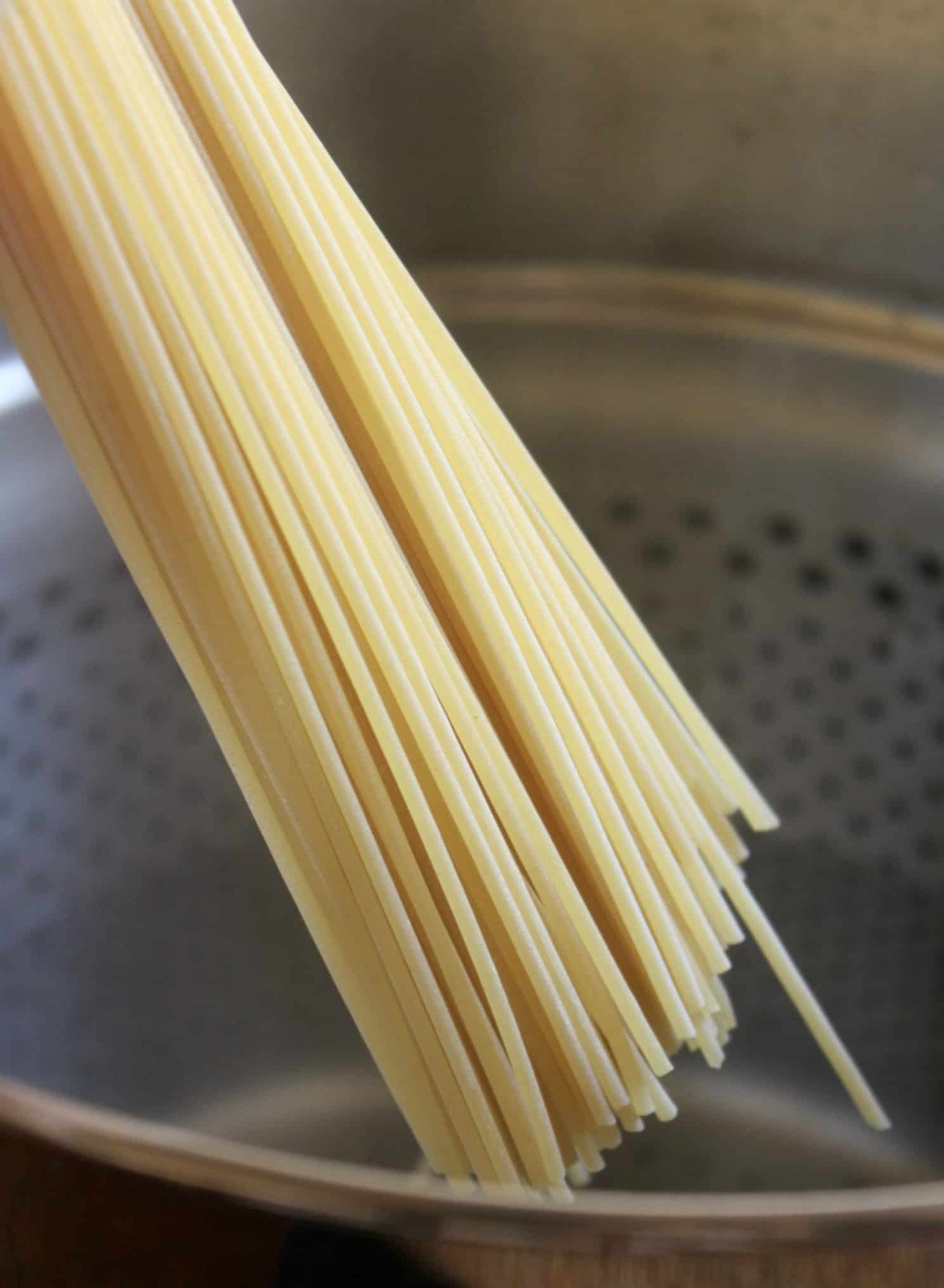
Cook as directed until al dente (a tiny bit hard in the center of the spaghetti).
Serve the Sauce on the Spaghetti (Properly)
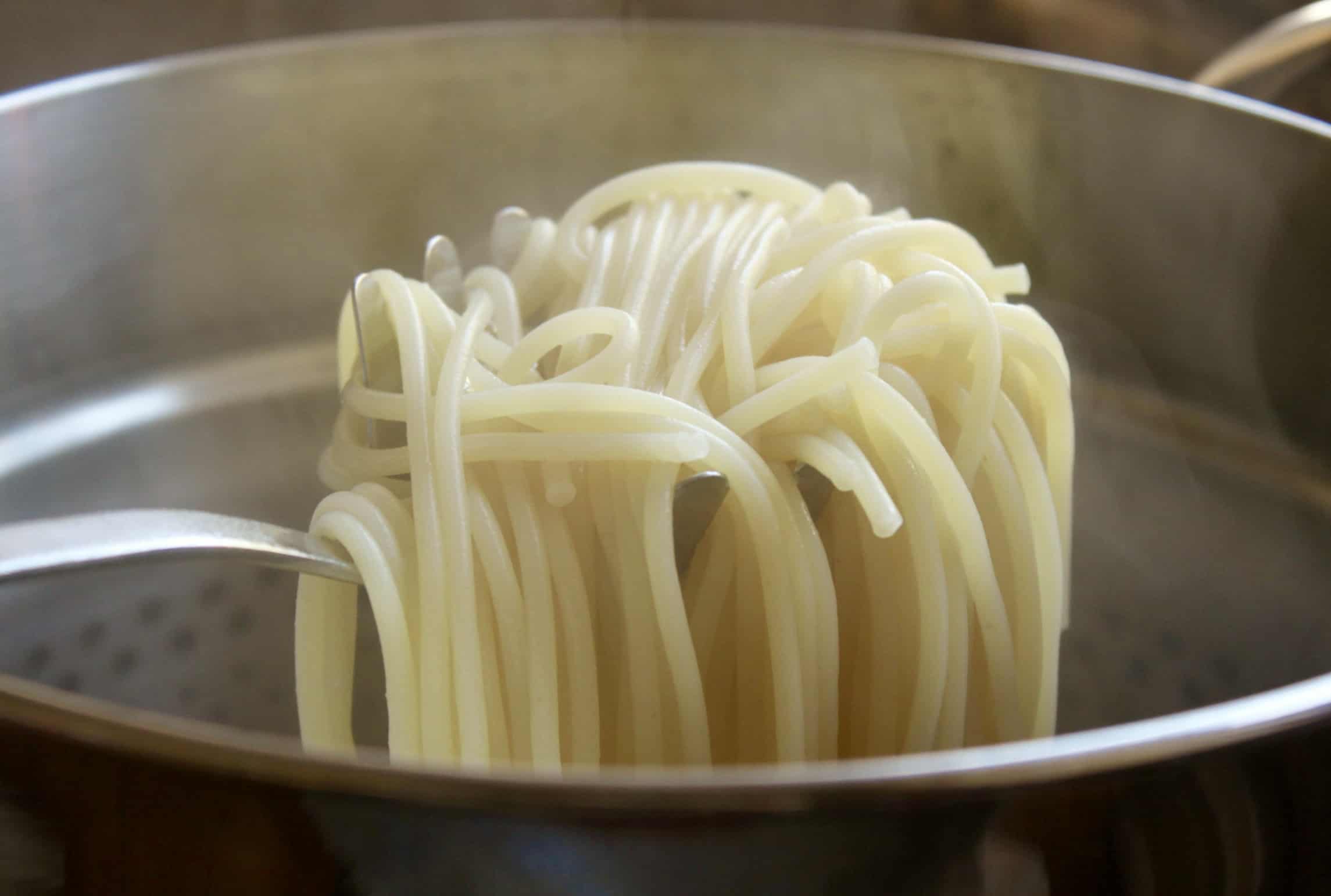
If you want to use a colander, reserve some pasta water. Otherwise, use a pasta fork to take the pasta directly from the pot and place into the sauce (either remove some of the sauce from the pot, or use another pot to mix the pasta and sauce together). Just remember, the spaghetti goes into the sauce, not the other way around. You can have it over very low heat to keep the pasta super hot (how I like it).
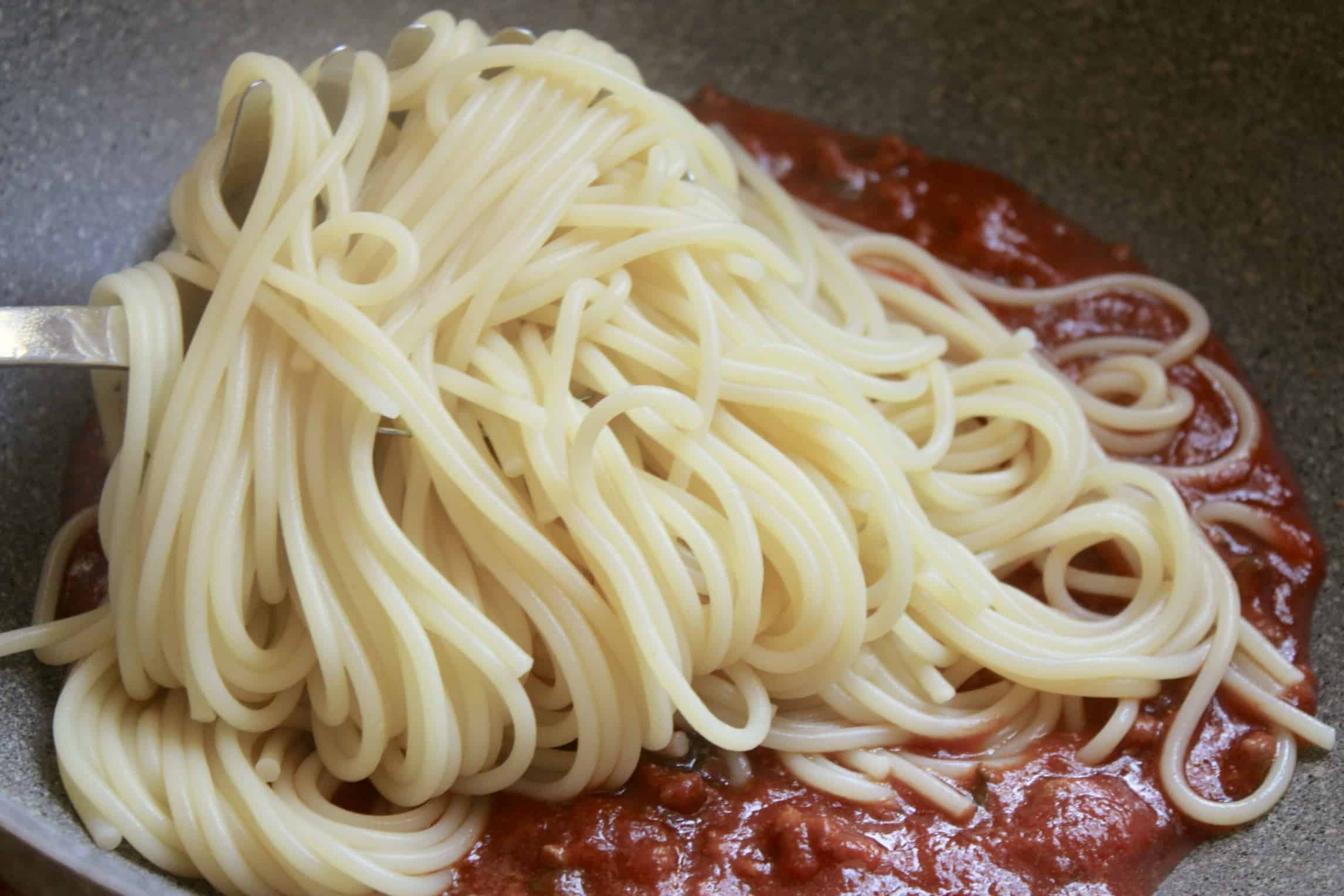
Mix well. If the pasta soaks up the sauce and seems too dry, add a little pasta water.
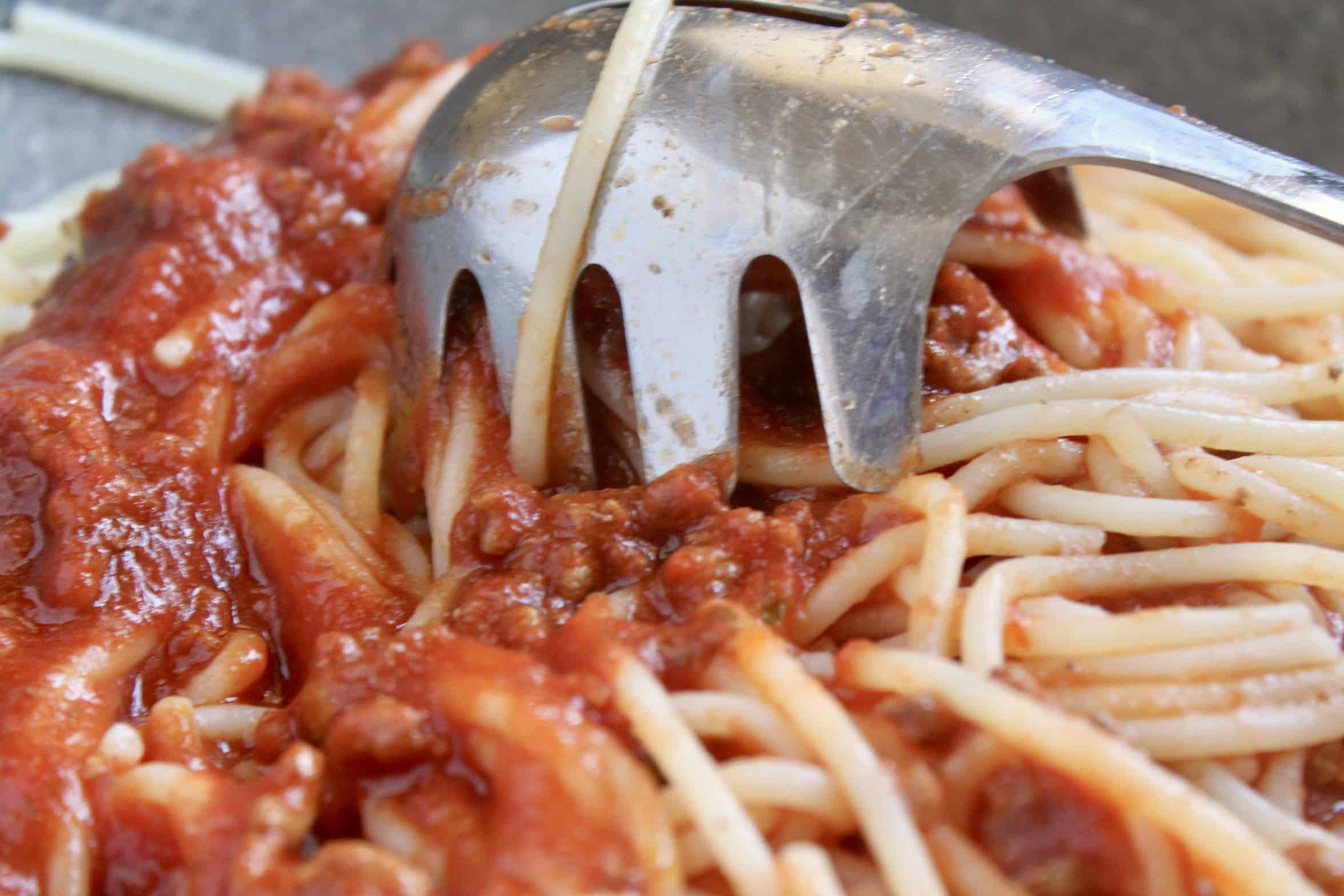
Add sauce until the pasta is completely coated.
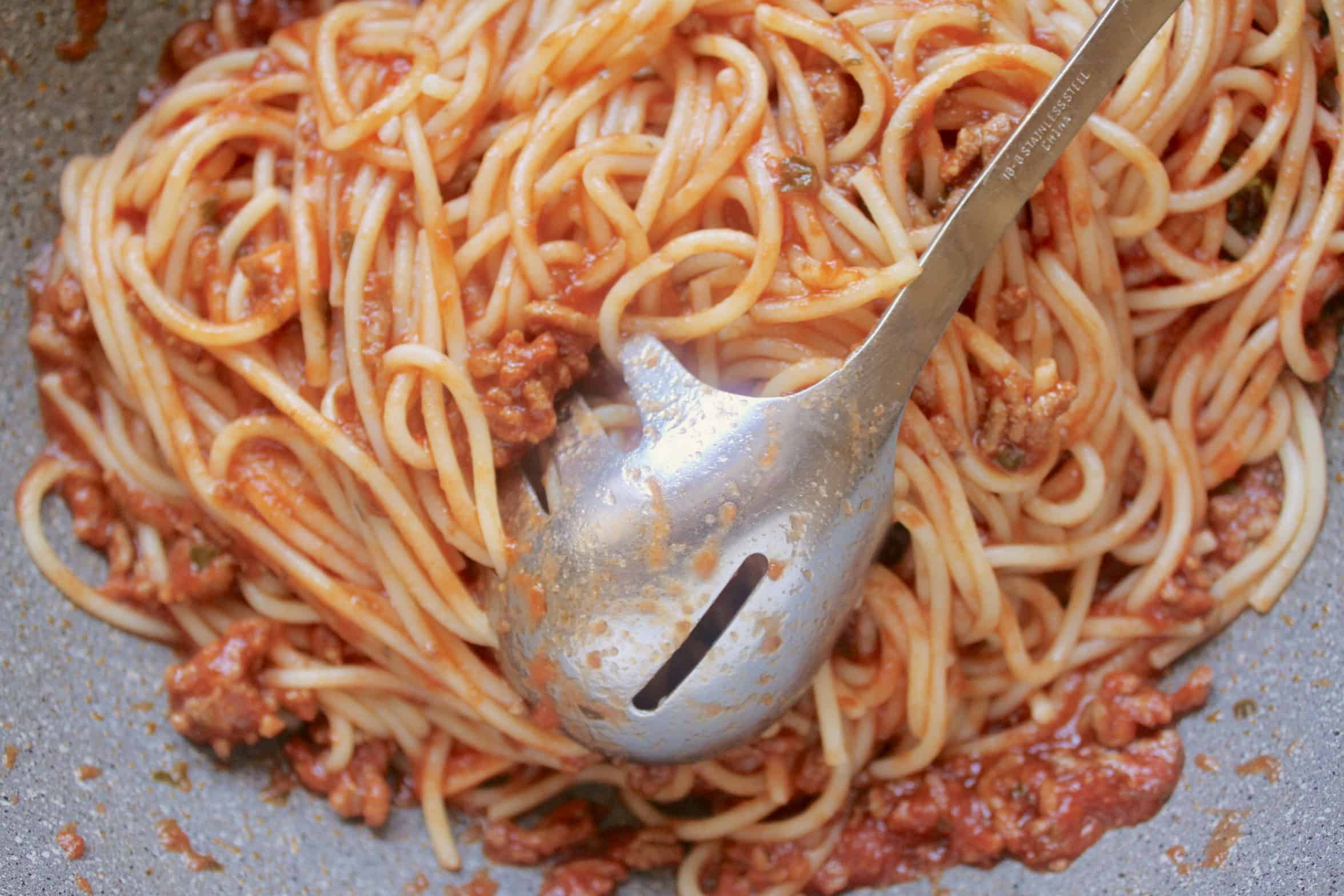
There are two ways to serve spaghetti: twirled (more of a restaurant style), or simply placed as is, into a bowl (family-style).
To serve restaurant style, use a large fork, or tongs to twirl the pasta inside a ladle.
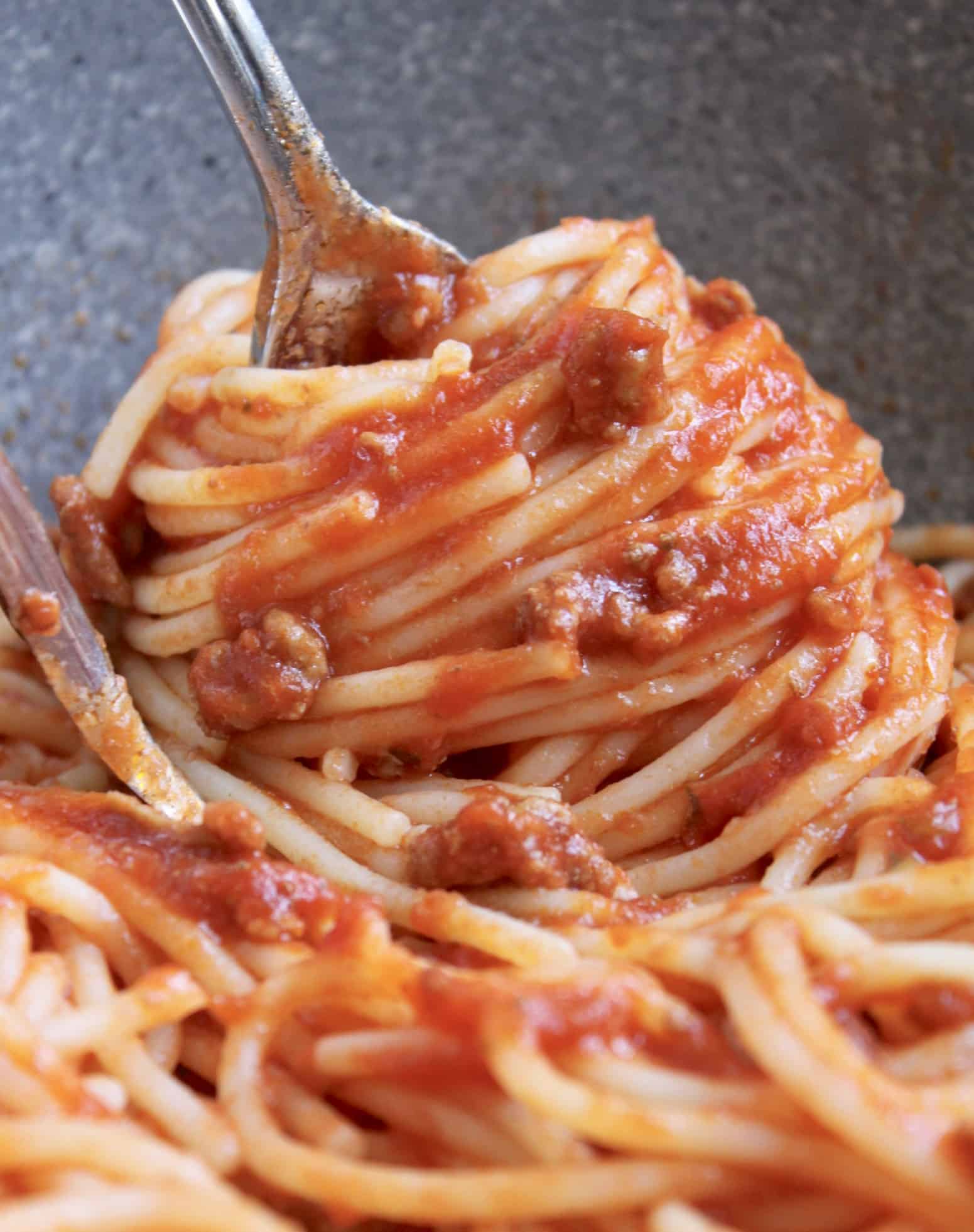
Then simply place onto the bowl, or plate.
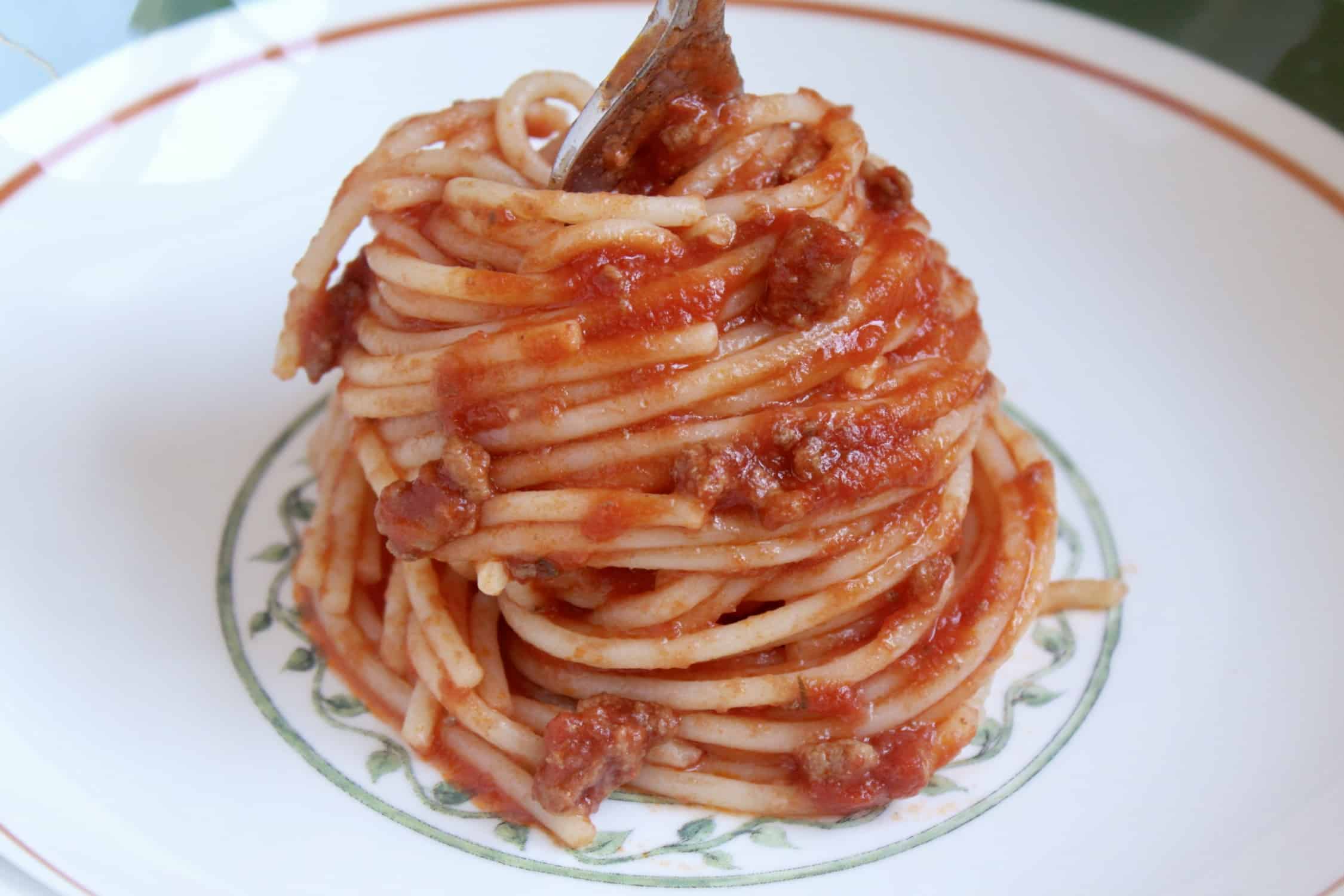
Top with a sprig of basil, and serve!

Family-style or homestyle, is easier: just place the spaghetti into a plate or bowl.
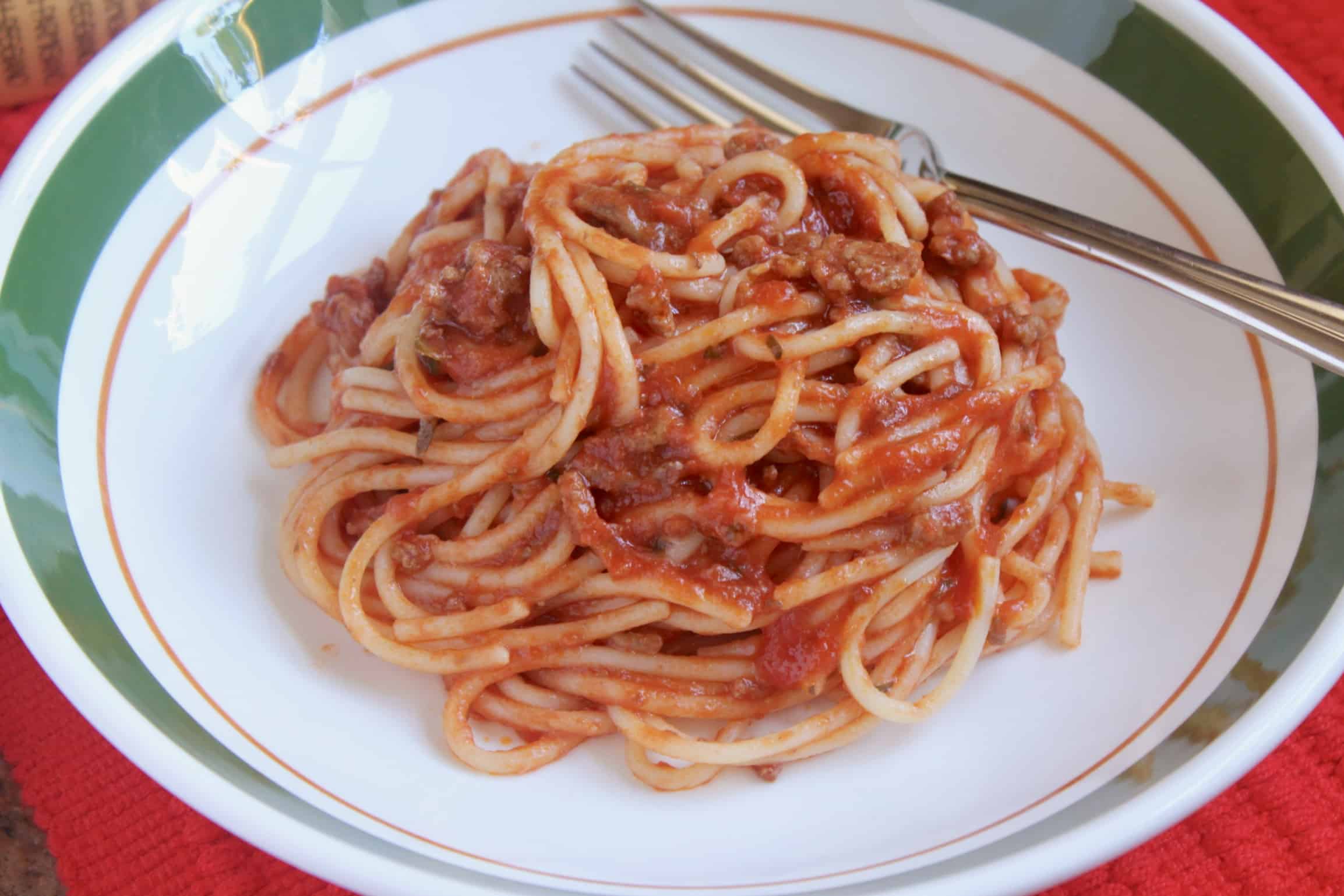
You can still add that sprig of basil.
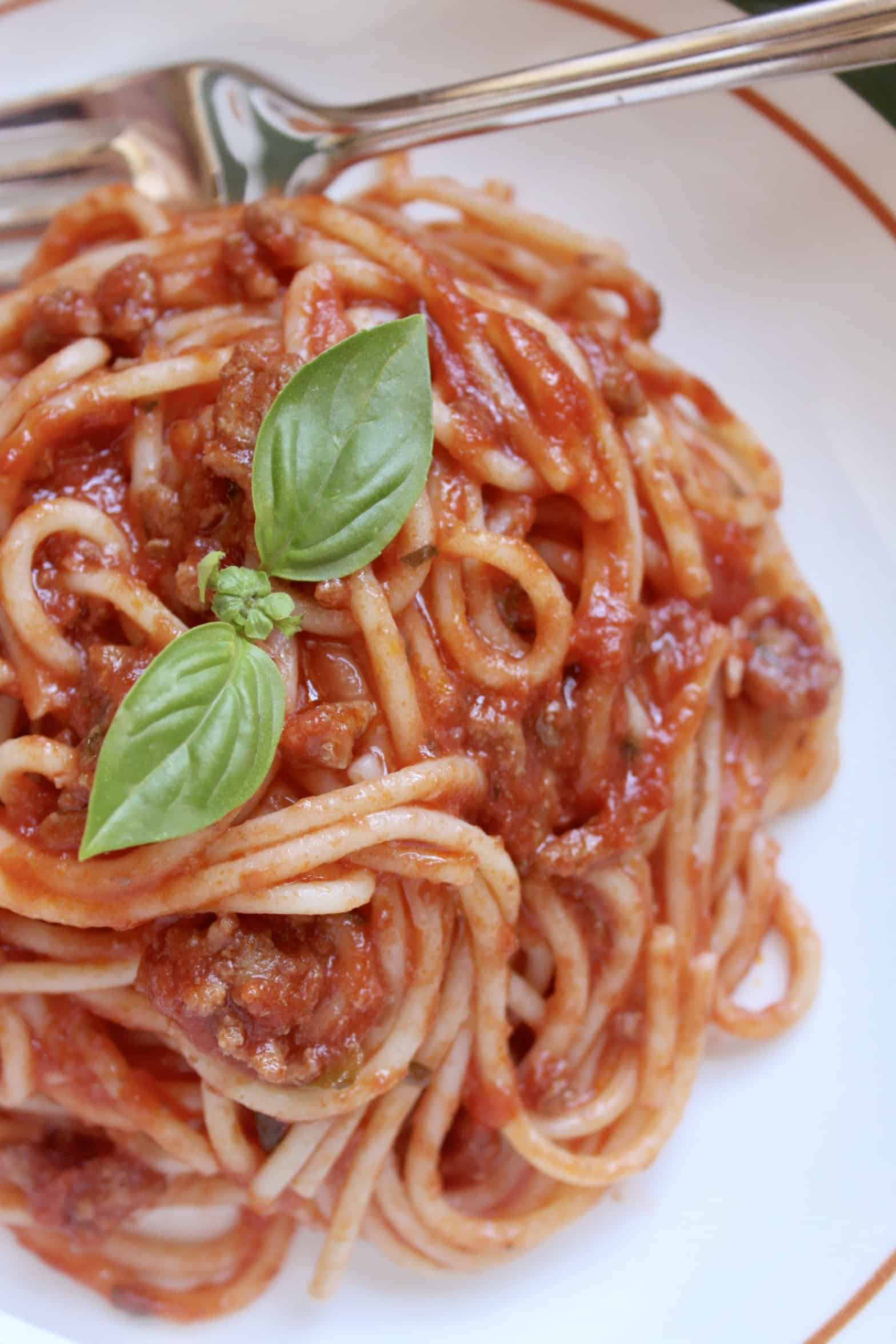
However, either way, a good grating of Parmigiano Reggiano, or Pecorino Romano is an added bonus!
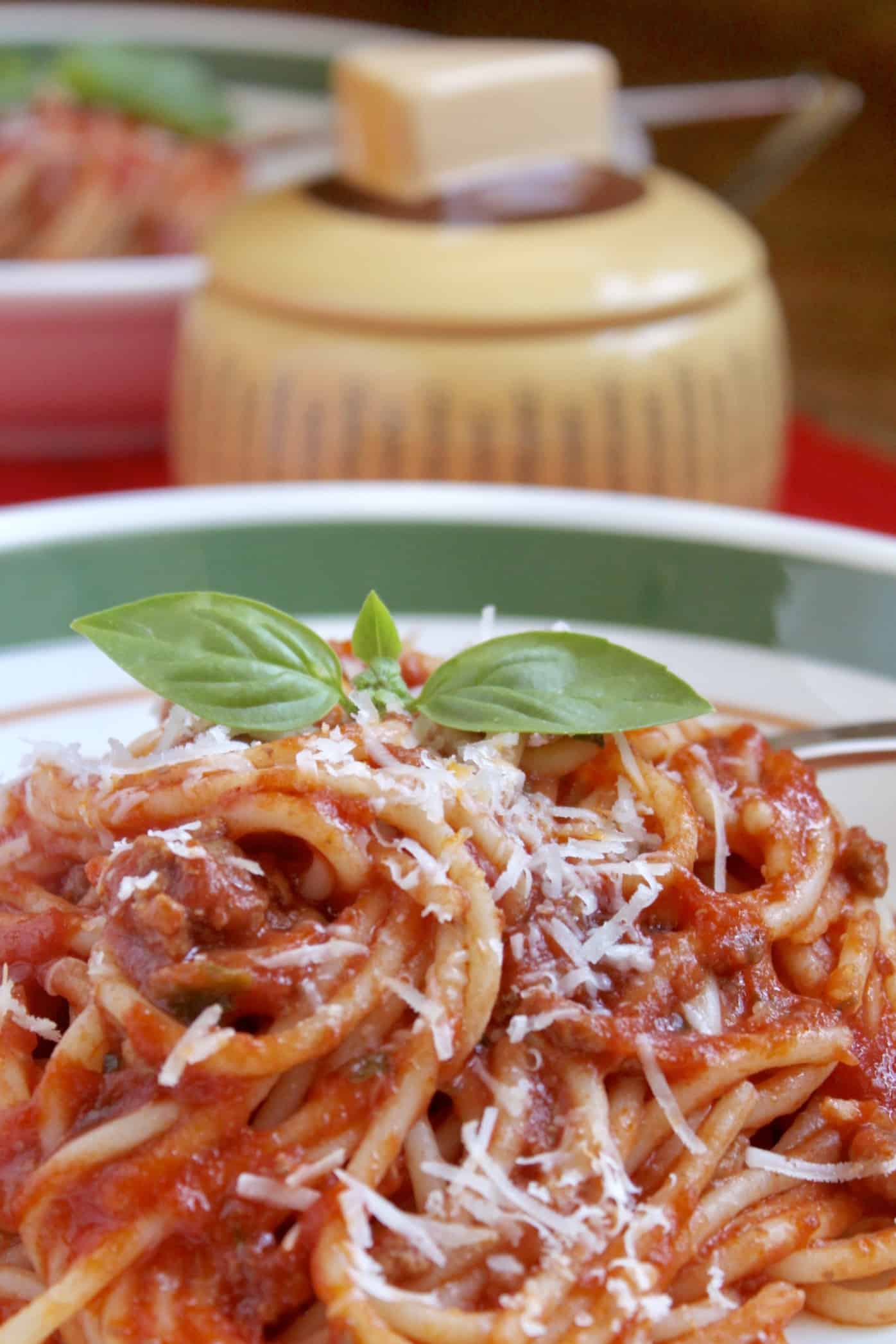
To Freeze Spaghetti Sauce
Simply place the sauce in a freezerproof container and freeze. Will keep well in the freezer for up to a month. Defrost in the fridge, then reheat in a pot, and add the pasta as directed in the recipe.
I truly hope that you try this simple recipe with my suggested ingredients and that you will never buy jars of pre-made spaghetti sauce from the store in future. That's my goal, so please let me know if you try it!
Ingredients
- 4 Tbsp extra virgin olive oil (good quality)
- 3 cloves of fresh garlic (be sure it is not from China)
- fresh Italian parsley, chopped
- 8 oz ground beef, grass fed
- about 2 tsp Kosher or sea salt
- 1 (28 oz) jar/can of good quality Italian tomatoes (passata/purée or for the best quality, look for Pomodoro San Marzano Dell'Agro Sarnese-Nocerino DOP tomatoes--which are only ever whole, peeled tomatoes grown in a certain region of Italy)
- 8 to 10 fresh Italian basil leaves
- black pepper, to taste
Instructions
Make the Spaghetti Sauce
- Crush the garlic with the flat side of a knife.
- Bring the extra virgin olive oil (and lard, if using) to medium high heat, then add the garlic and chopped parsley.
- After a minute, add the ground beef and break up with a wooden spoon. Add some salt, and cook until it begins to dry up, then add the tomato passata/purèe/chopped tomatoes of your choice.
- If using Mutti, they tend to be thick, so add about ¾ cup (6 oz) of water or until the bottom line of the jar (shake to rinse) then add to the pot. If you're using another brand, rinse the can/jar with a little less water, unless it's very thick.
- Put the burner on high to bring the sauce to a simmer, and add more salt. Don't be afraid to add Kosher/sea salt as I can guarantee you will have much less sodium in this sauce than a jar of store-bought.
- Lower the heat so that the sauce simmers gently for about an hour, stirring occassionally (so that the sauce won't stick). Taste for seasoning after about 30 minutes, and add salt if needed.
- When the sauce is ready, check once again for seasoning. Add salt and pepper as desired, and a generous amount of fresh basil, torn into pieces.
Notes
To serve properly (this is important for flavor) follow these directions:
If you want to use a colander to drain the spaghetti, reserve some pasta water. Otherwise, use a pasta fork to take the pasta directly from the pot and place into the sauce (either remove some of the sauce from the pot, or use another pot to mix the pasta and sauce together). Just remember, the spaghetti goes into the sauce, not the other way around. You can have it over very low heat to keep the pasta super hot (how I like it).
Mix well. If the pasta soaks up the sauce and seems too dry, add a little pasta water.
Add sauce until the pasta is completely coated.
There are two ways to serve spaghetti: twirled (more of a restaurant style), or simply placed as is, into a bowl (family-style).
To serve restaurant style, use a large fork, or tongs to twirl the pasta inside a ladle. Then simply place onto the bowl, or plate. Top with a sprig of basil, and serve!
Otherwise, simply place in the bowl, family-style.
Top with freshly grated Parmigiano Reggiano or Pecorino Romano cheese.
Nutrition Information:
Yield: 6 Serving Size: 1
Amount Per Serving: Calories: 160 Total Fat: 12g Saturated Fat: 2g Trans Fat: 0g Unsaturated Fat: 9g Cholesterol: 19mg Sodium: 410mg Carbohydrates: 6g Fiber: 2g Sugar: 4g Protein: 9g
Nutrition information is for spaghetti sauce only, and is an estimate.
Christina's Cucina is a participant in the Amazon Services LLC Associates Program, an affiliate advertising program designed to provide a means for sites to earn advertising fees by advertising and linking to Amazon.com.
Source: https://www.christinascucina.com/spaghetti-sauce-easy-italian-recipe-with-6-ingredients/
0 Response to "Spaghetti Sauce With Italian Sausage and Ground Beef"
Post a Comment